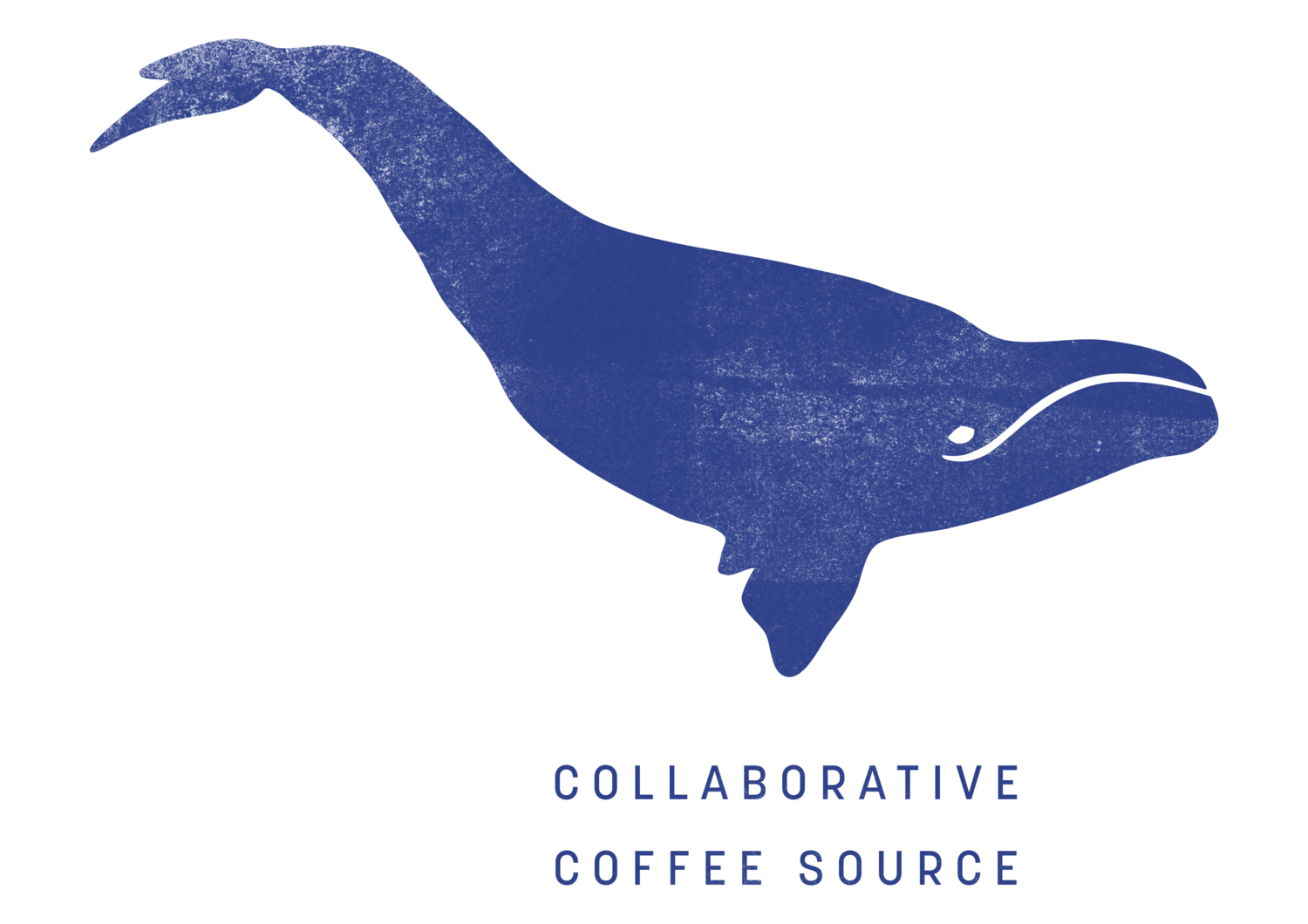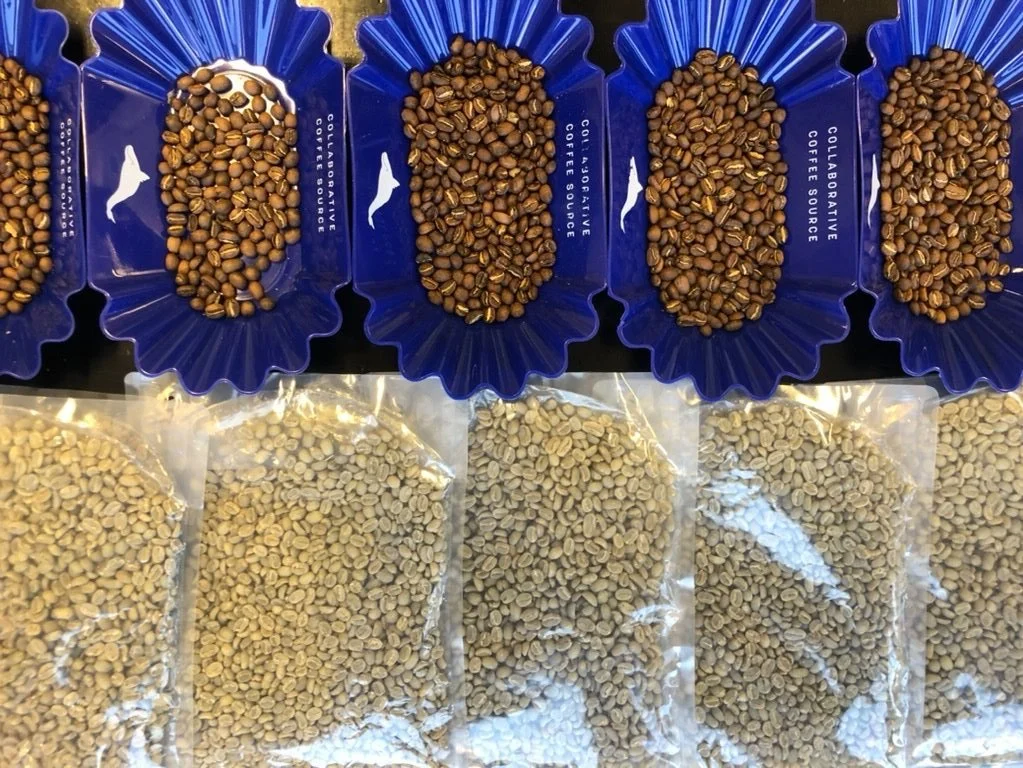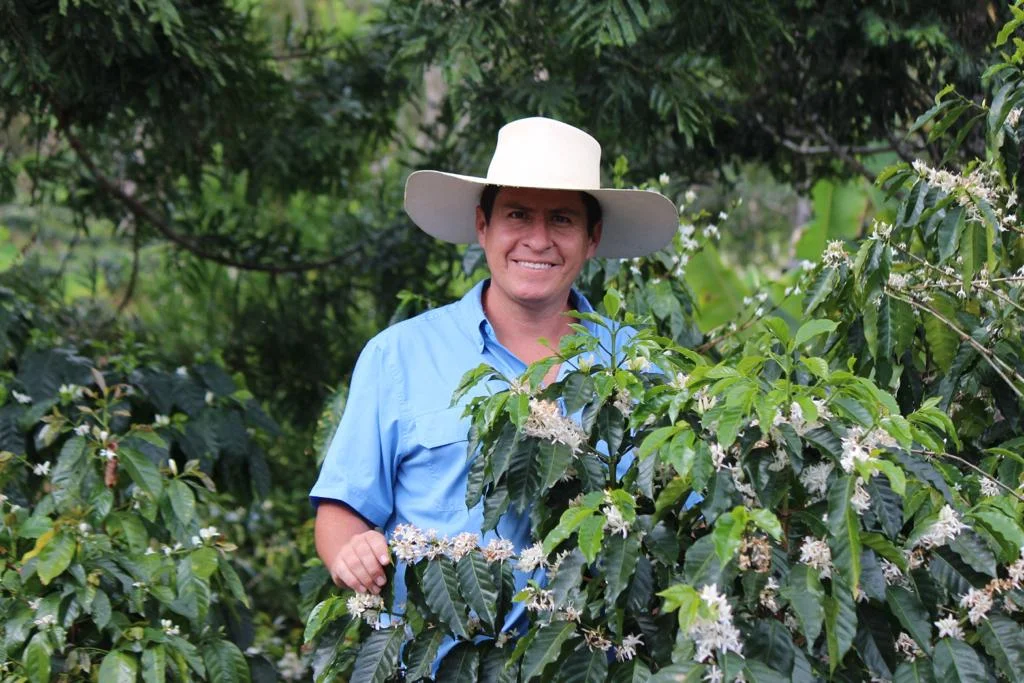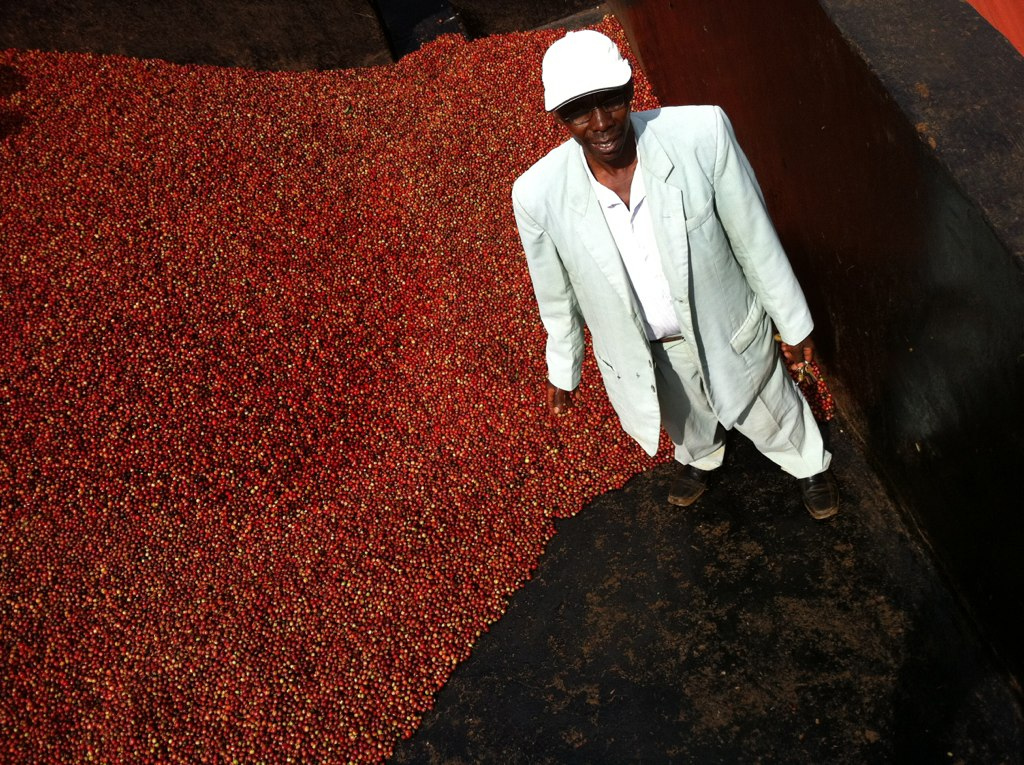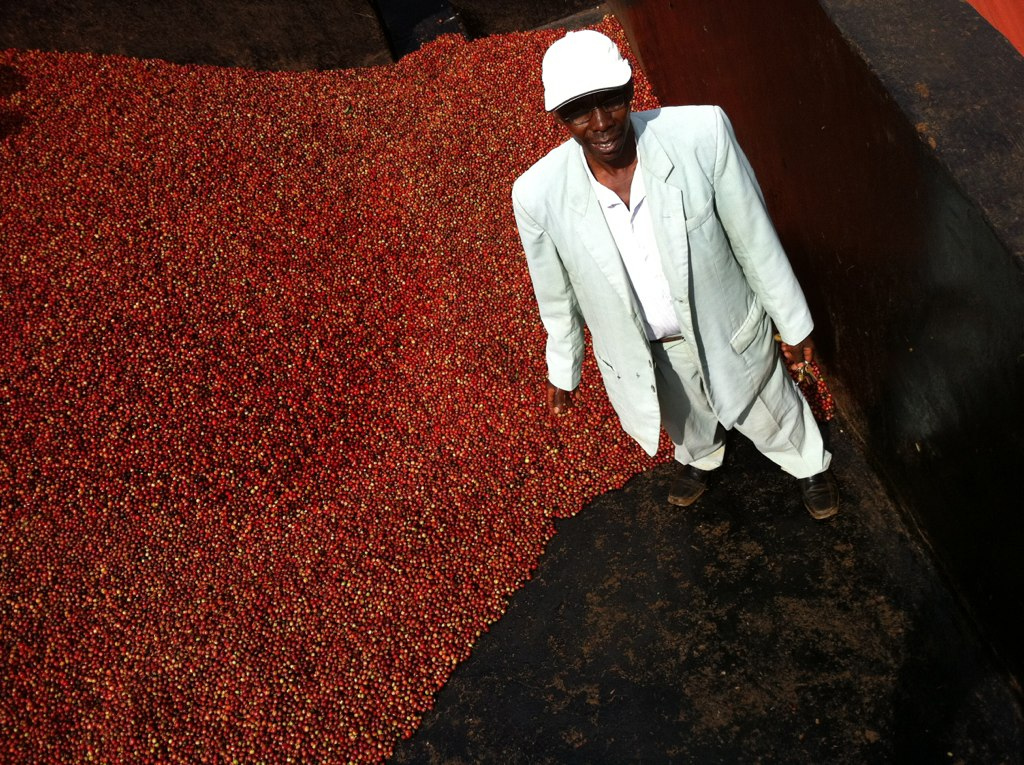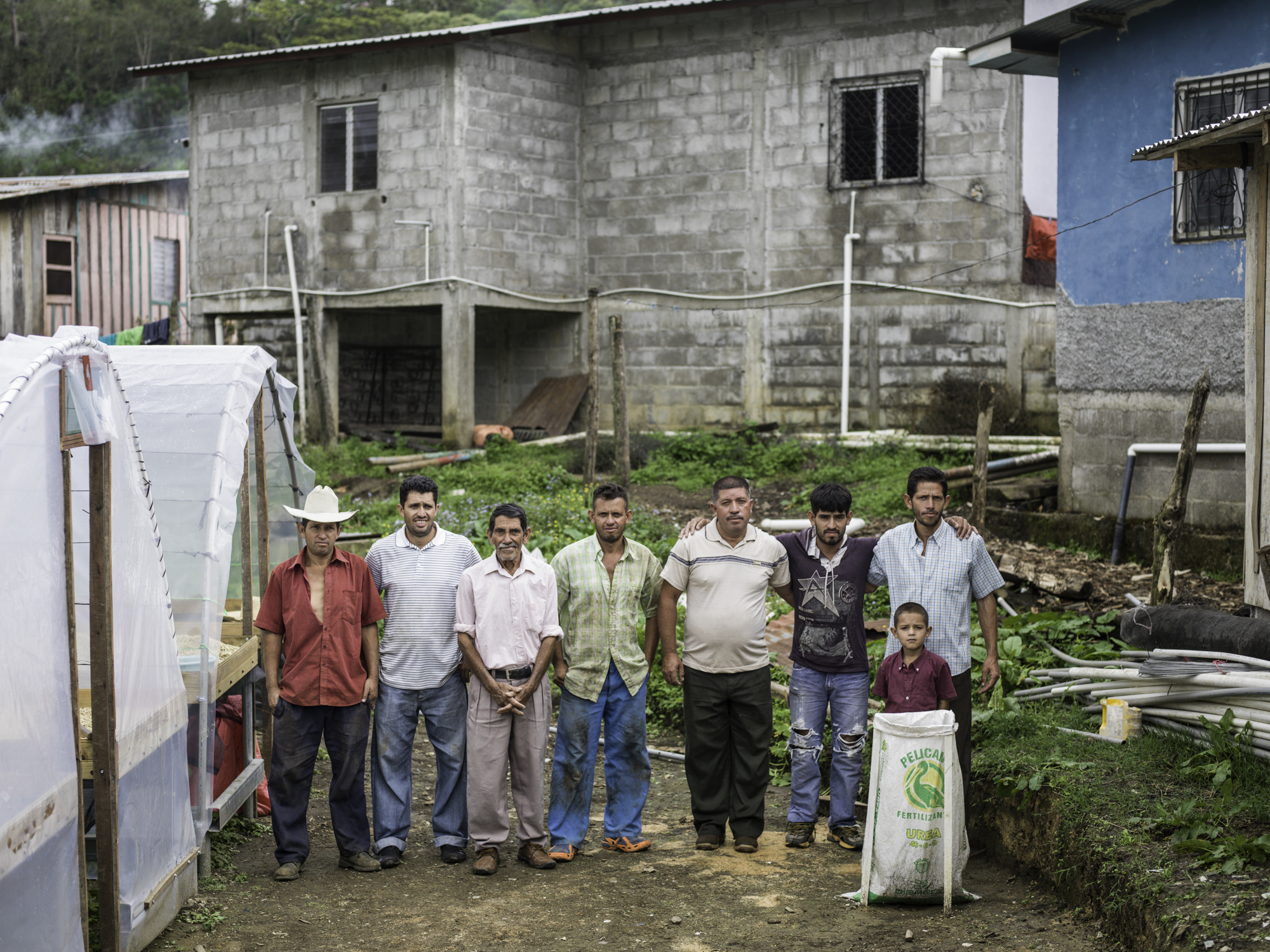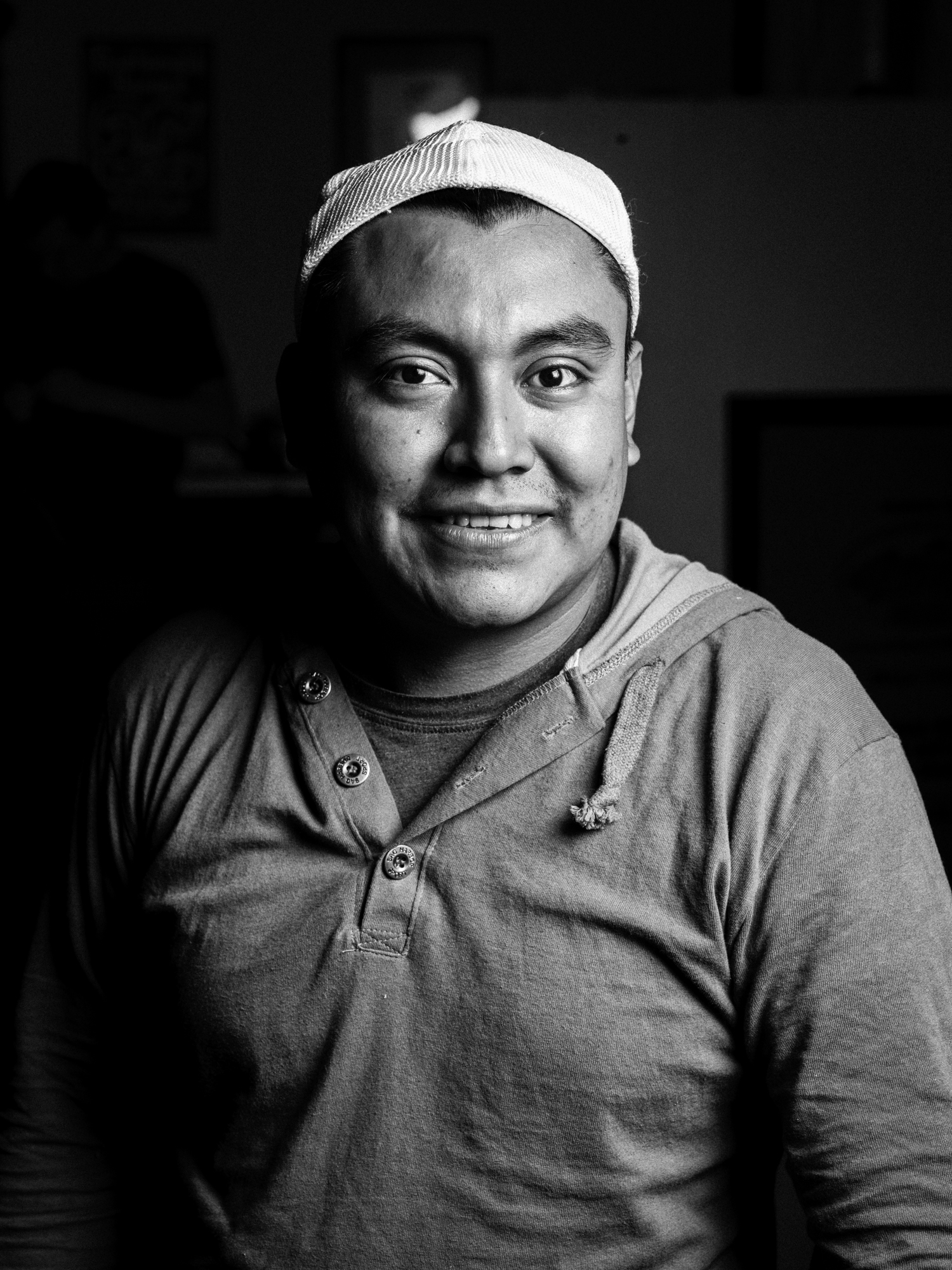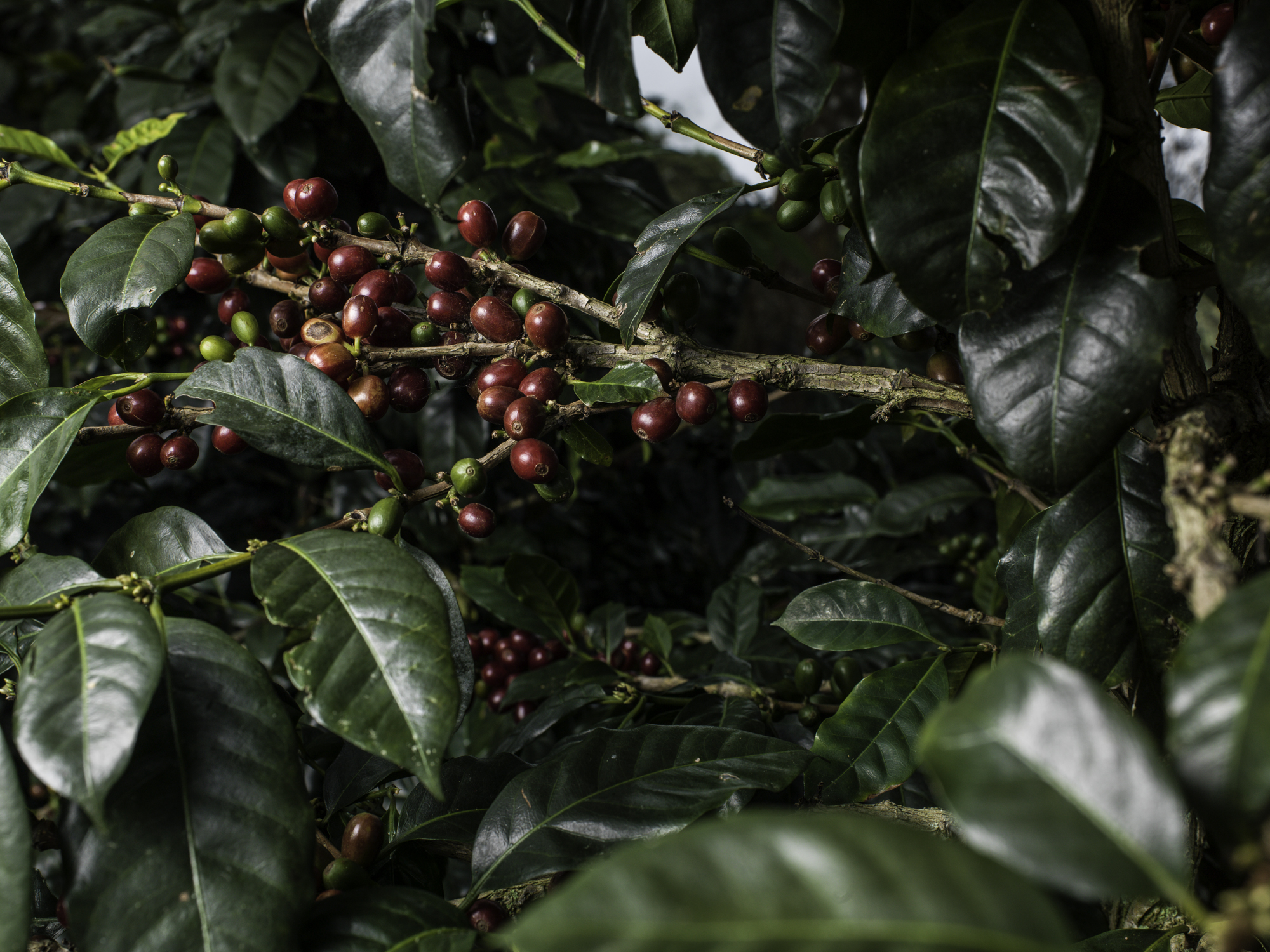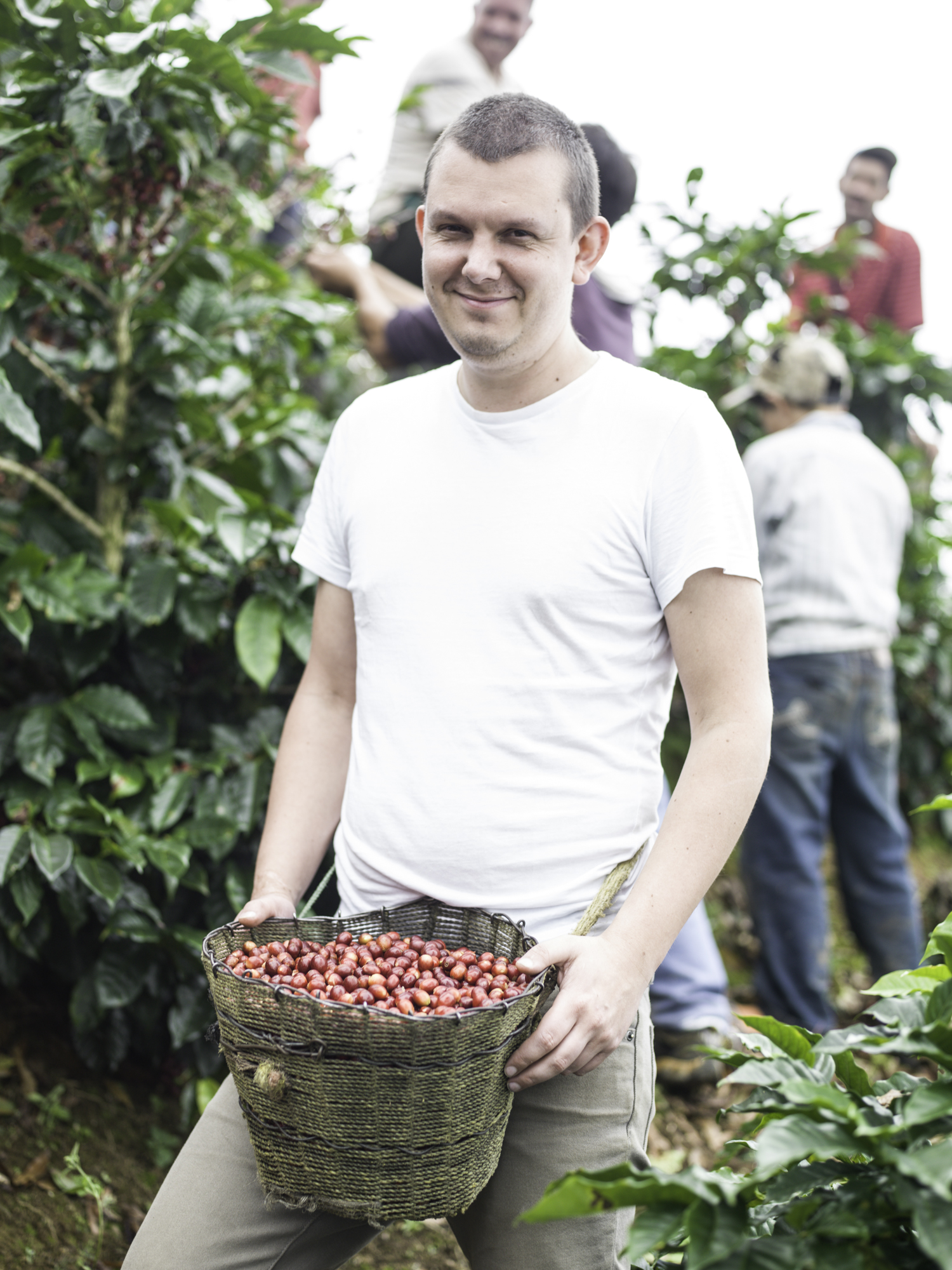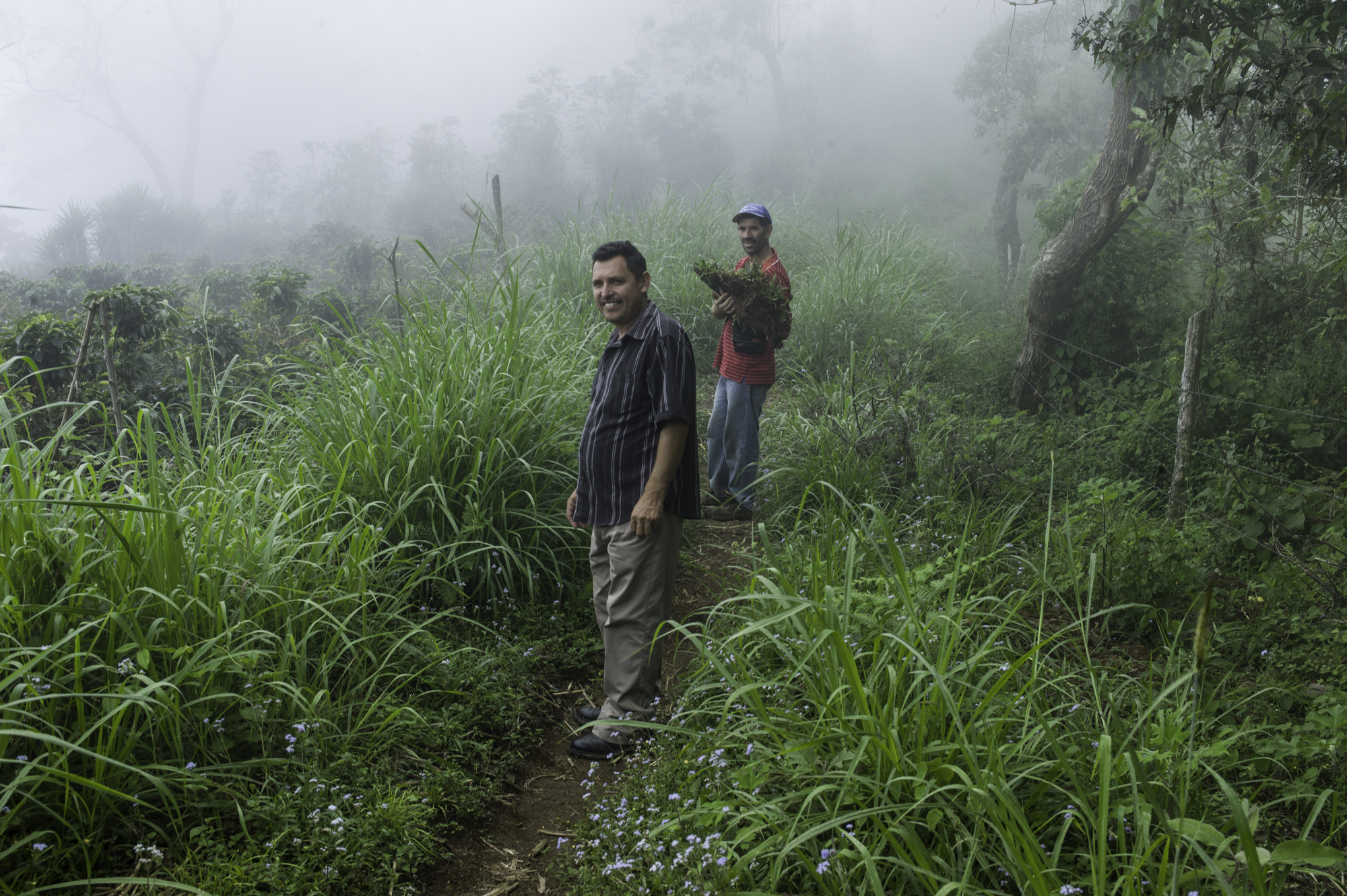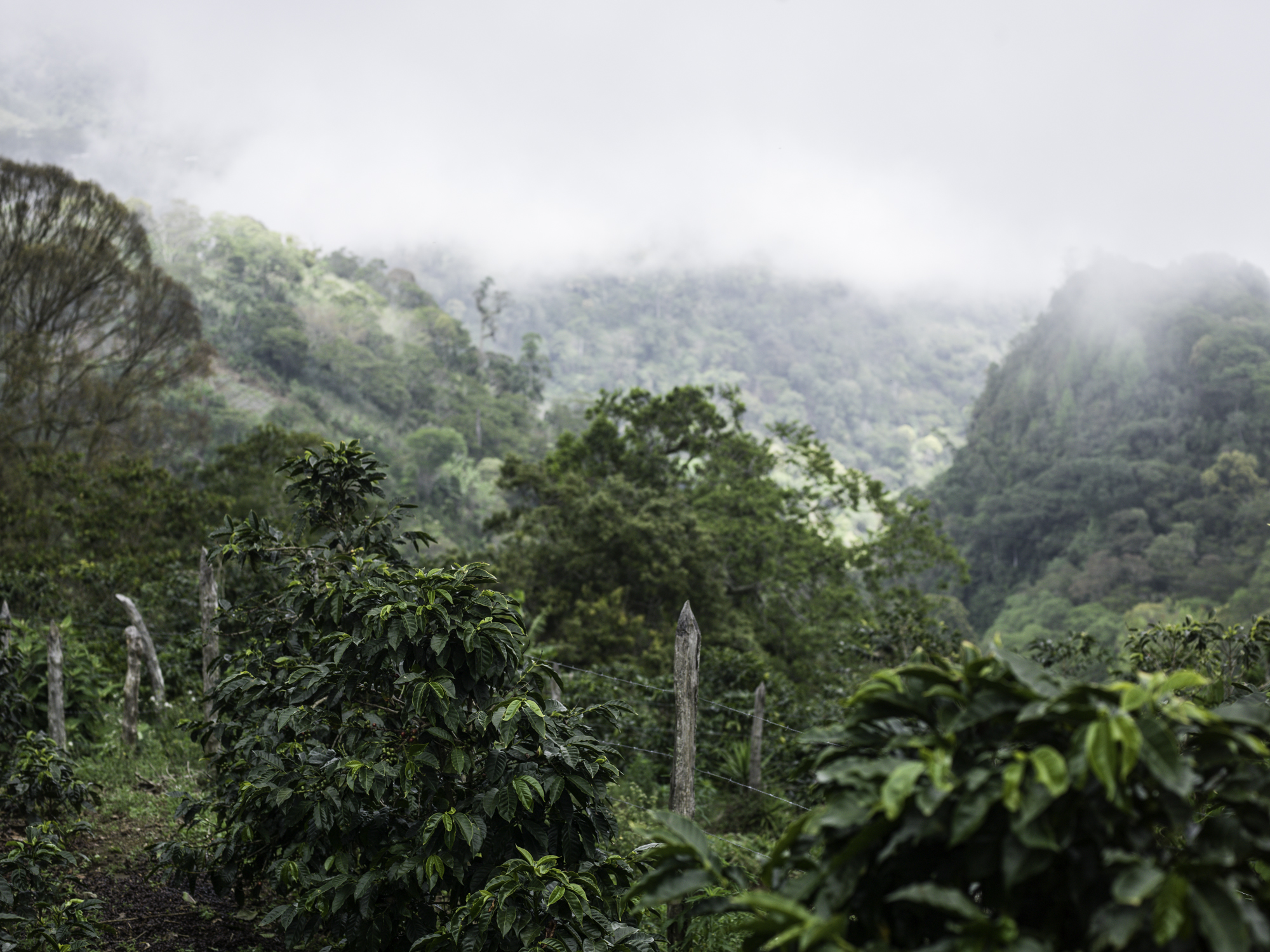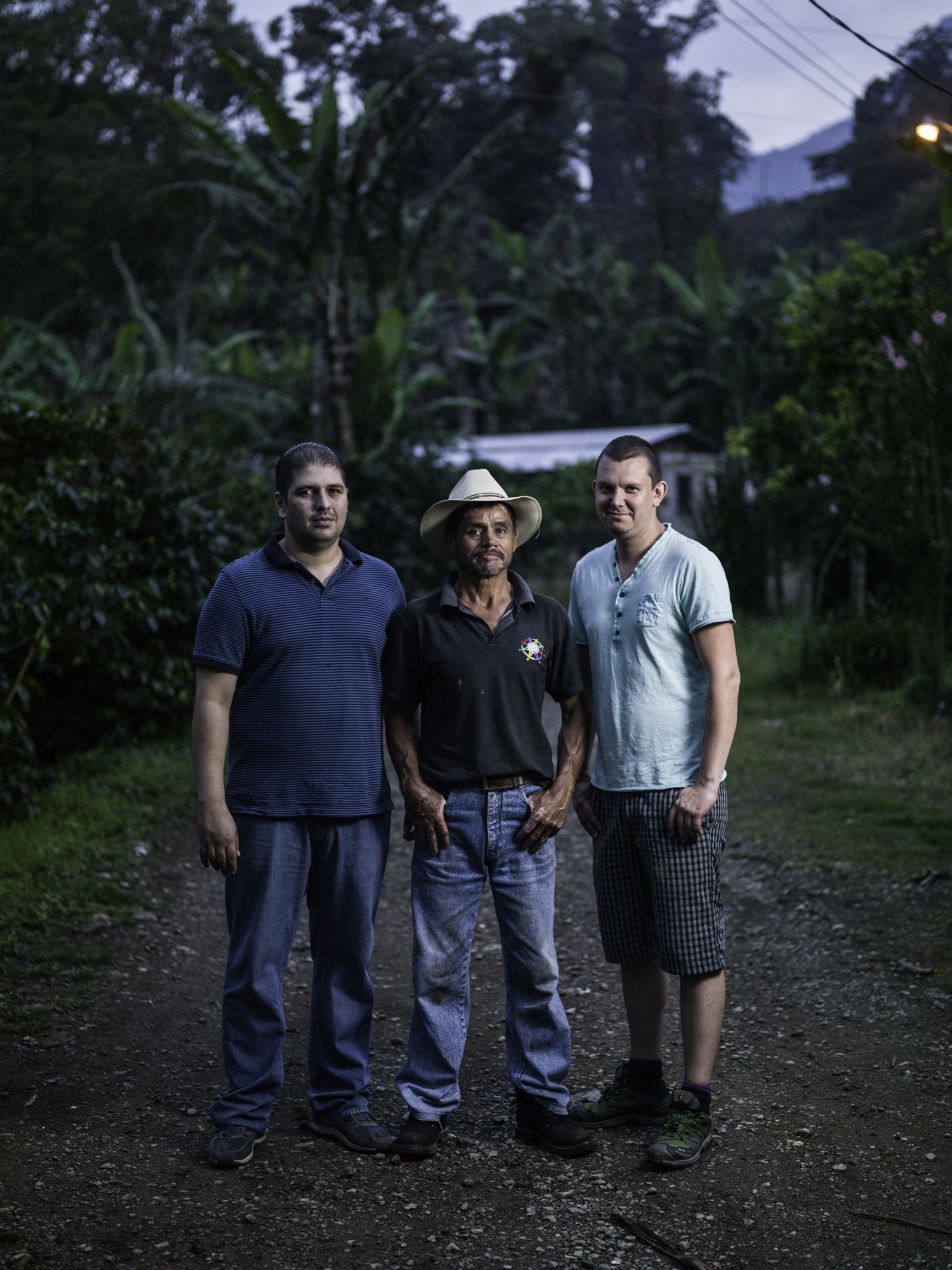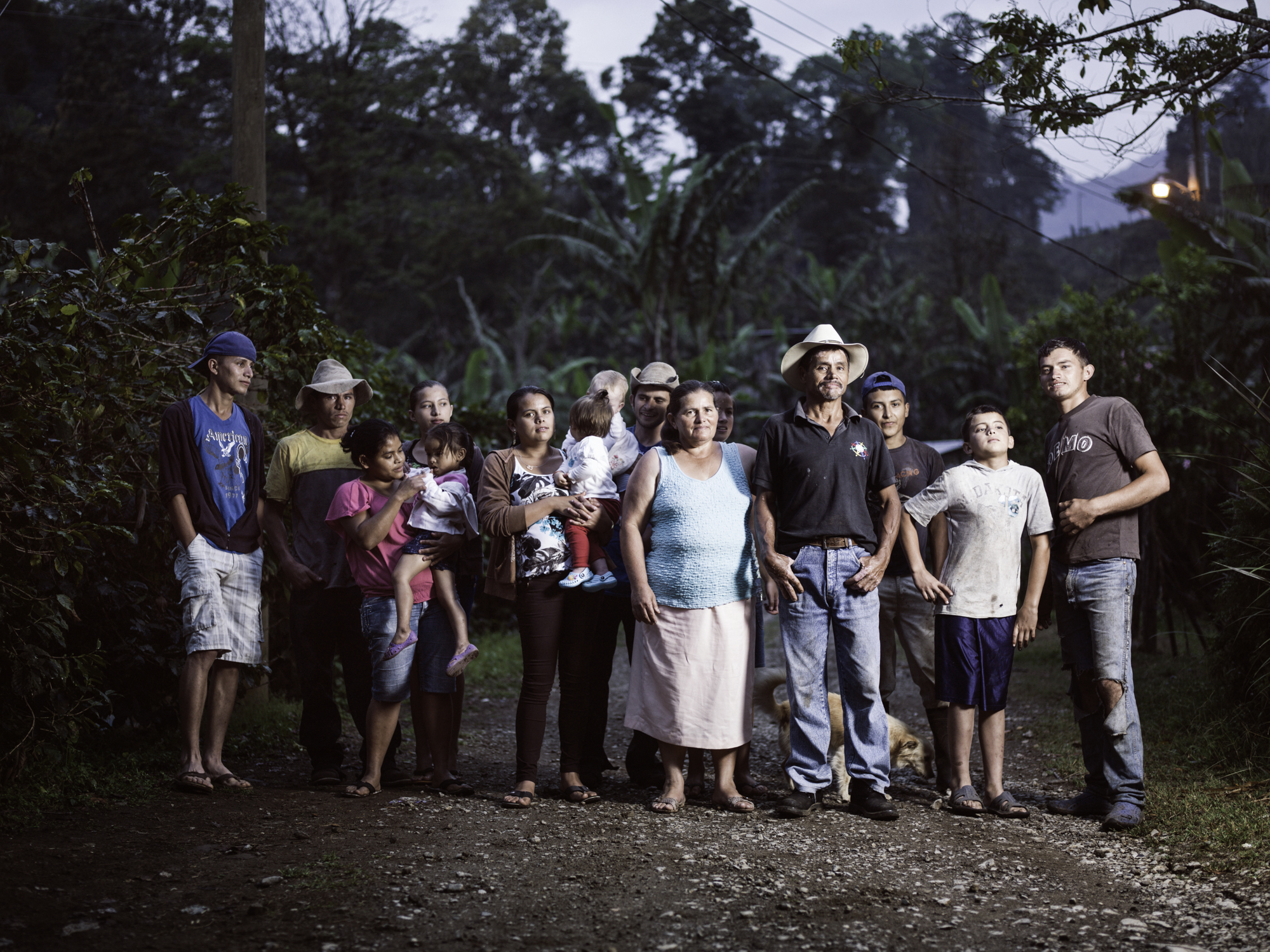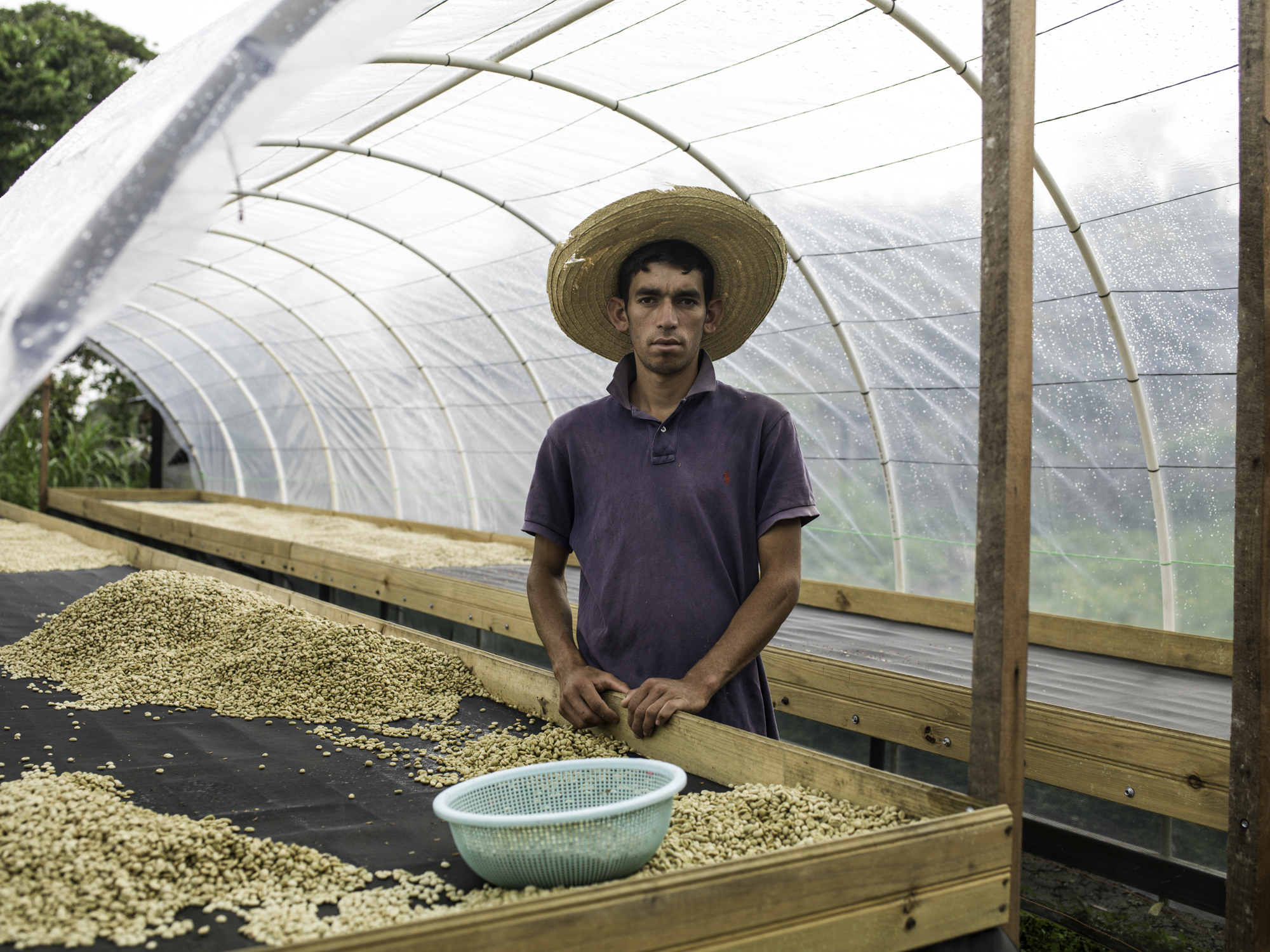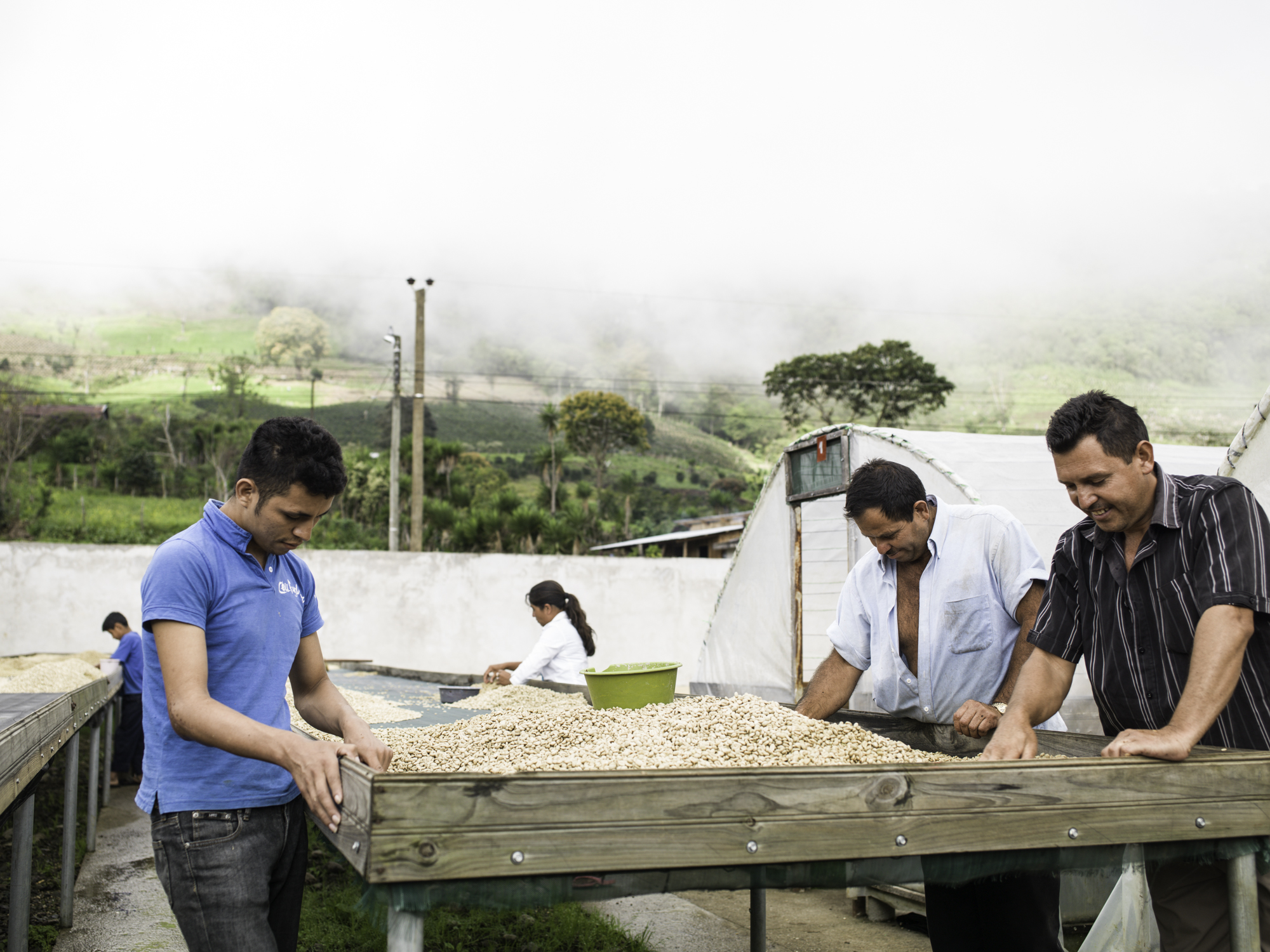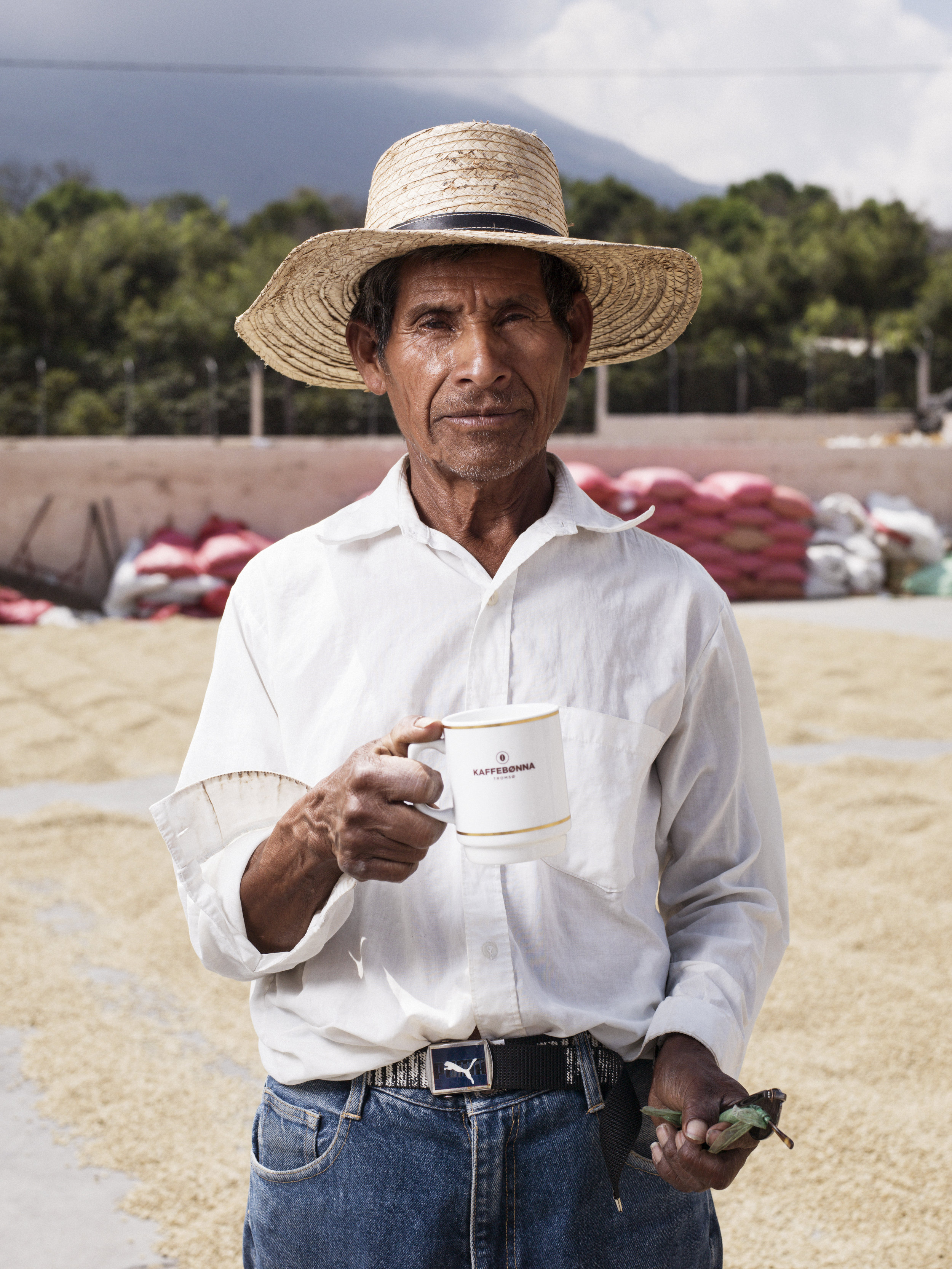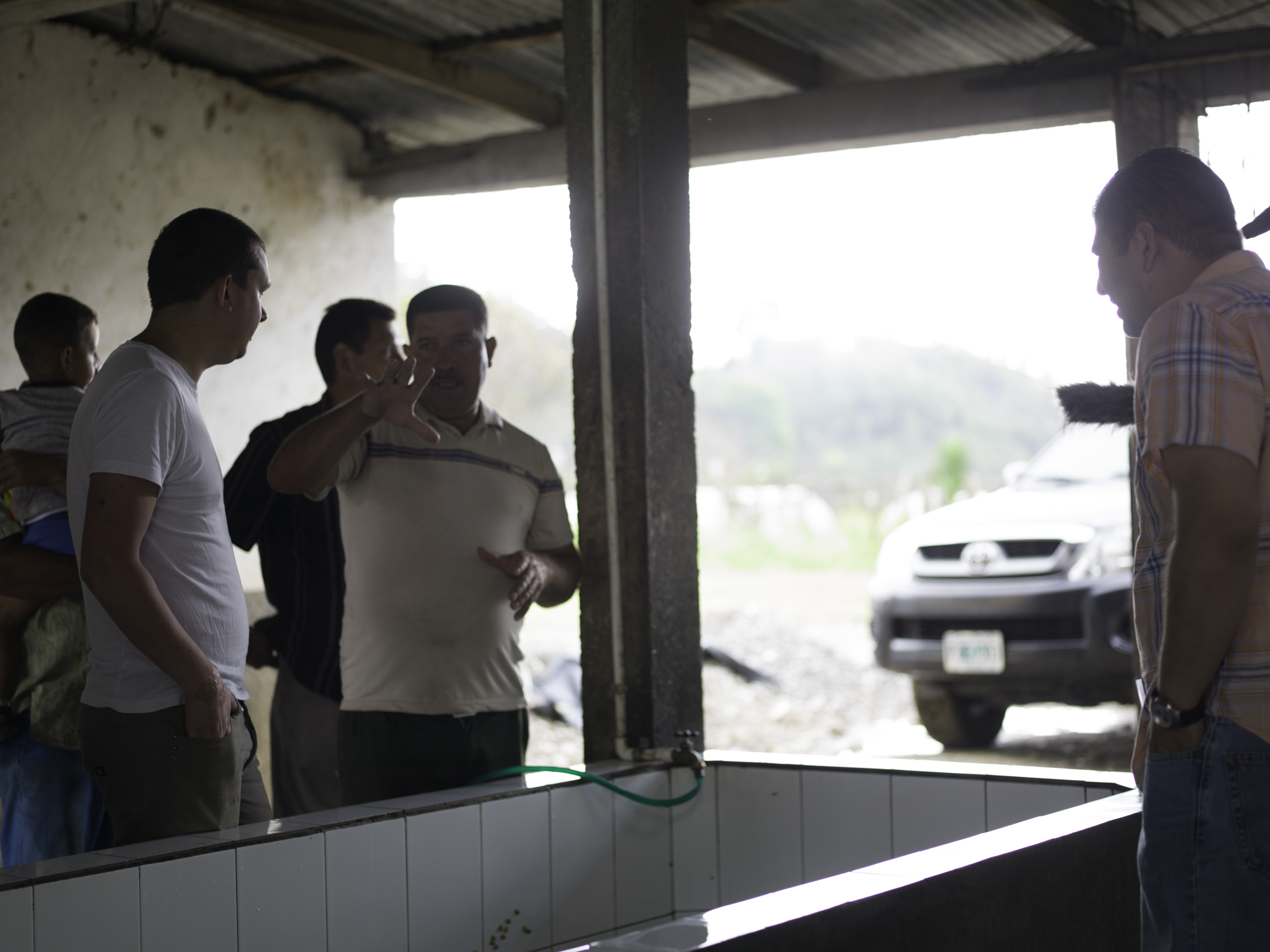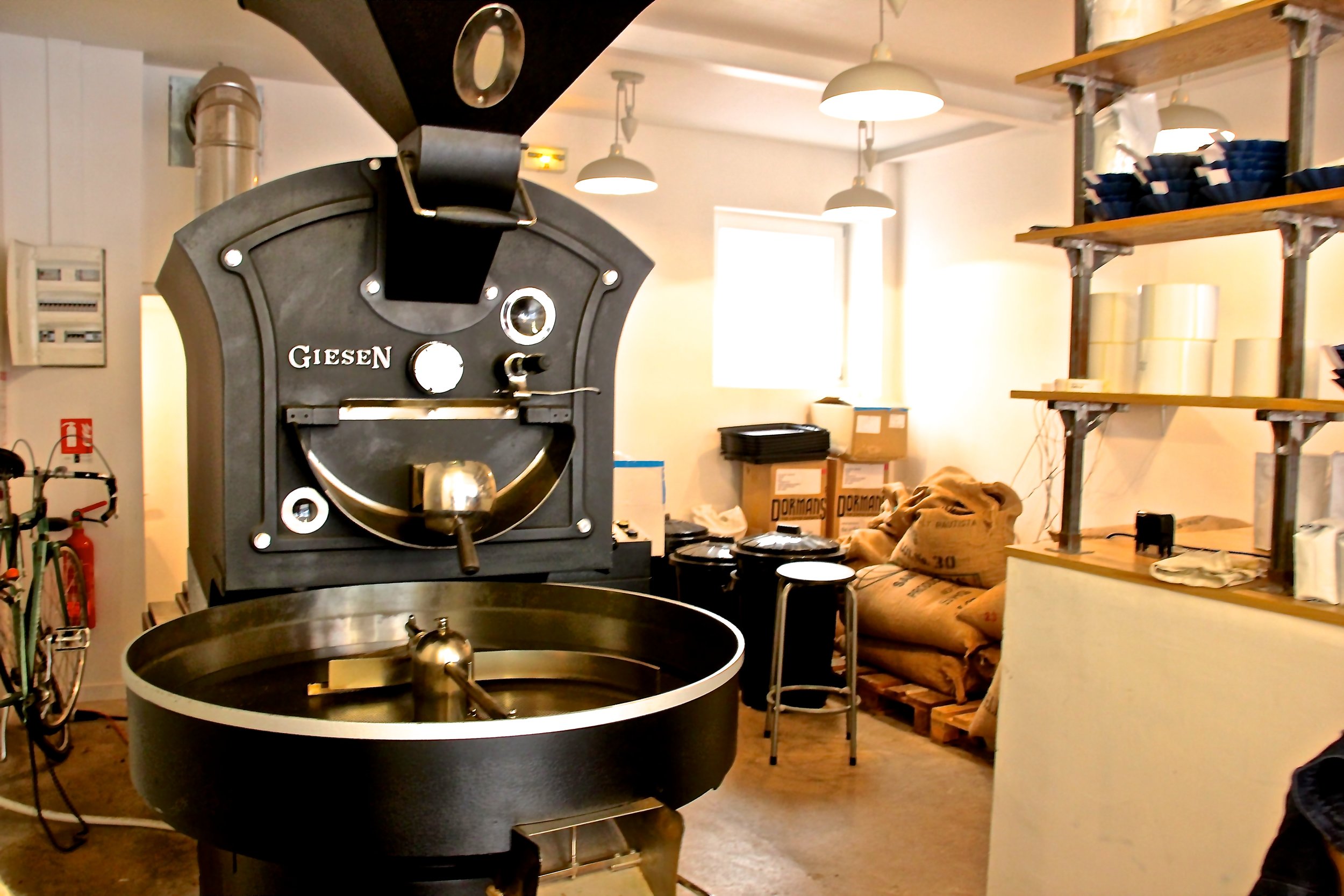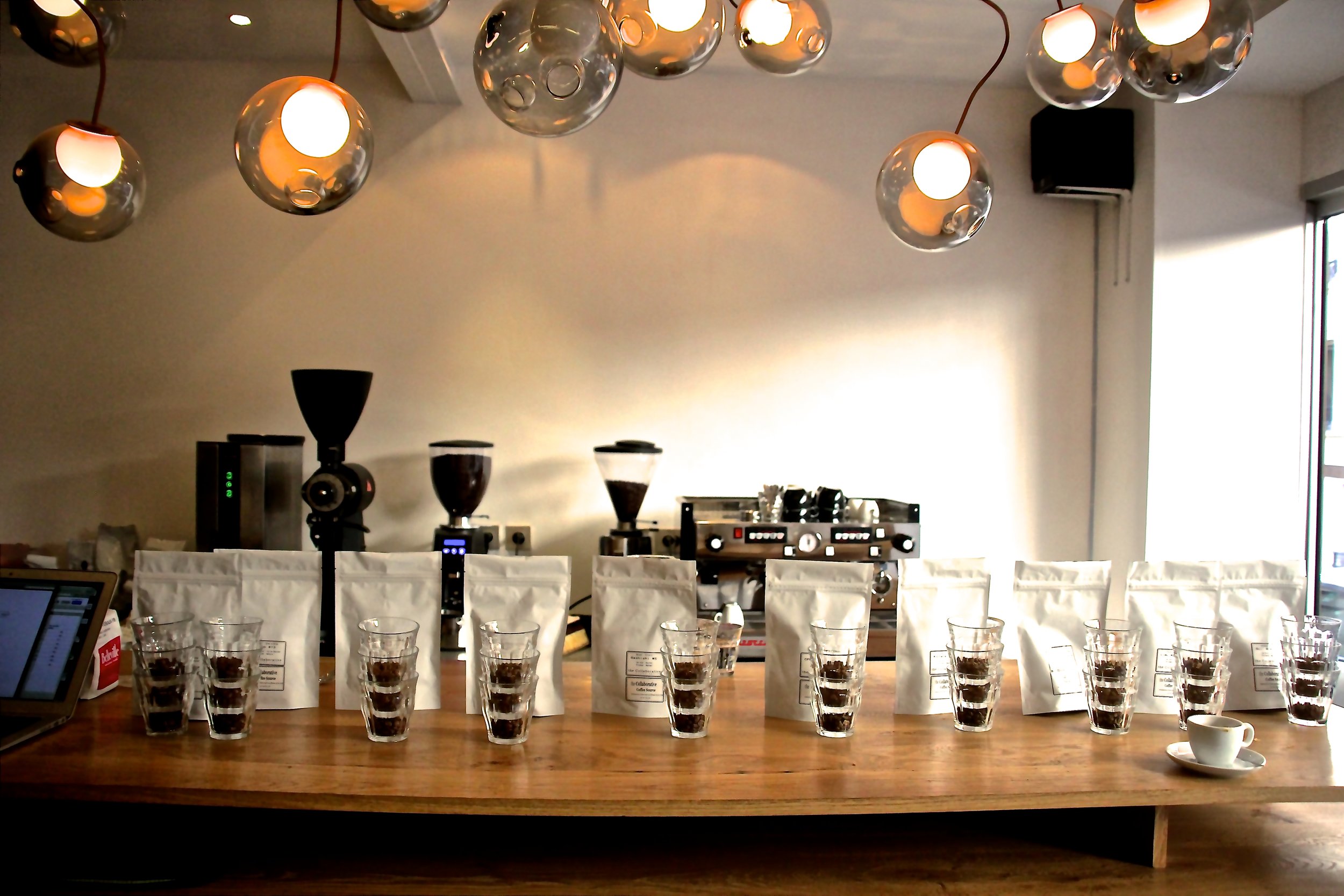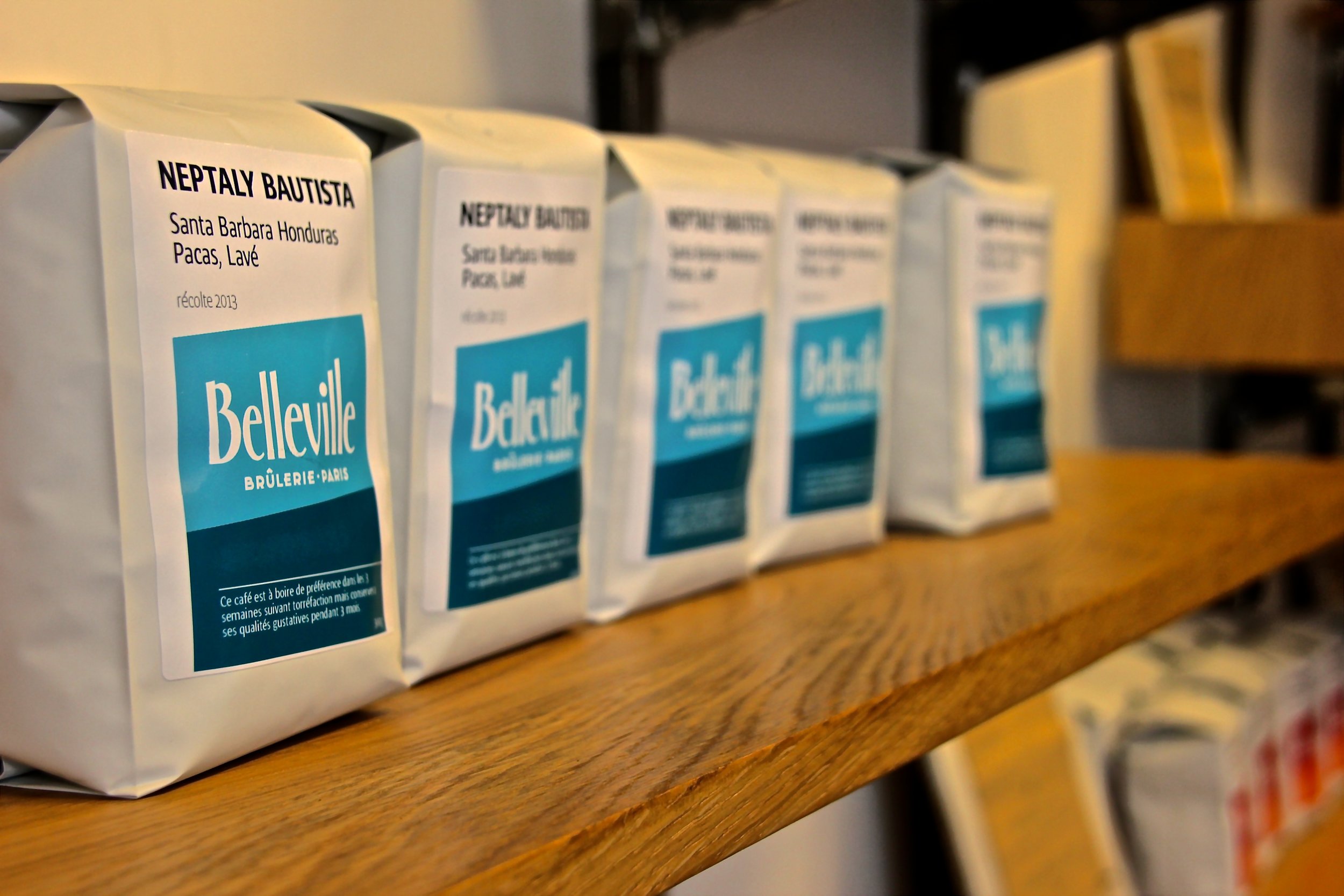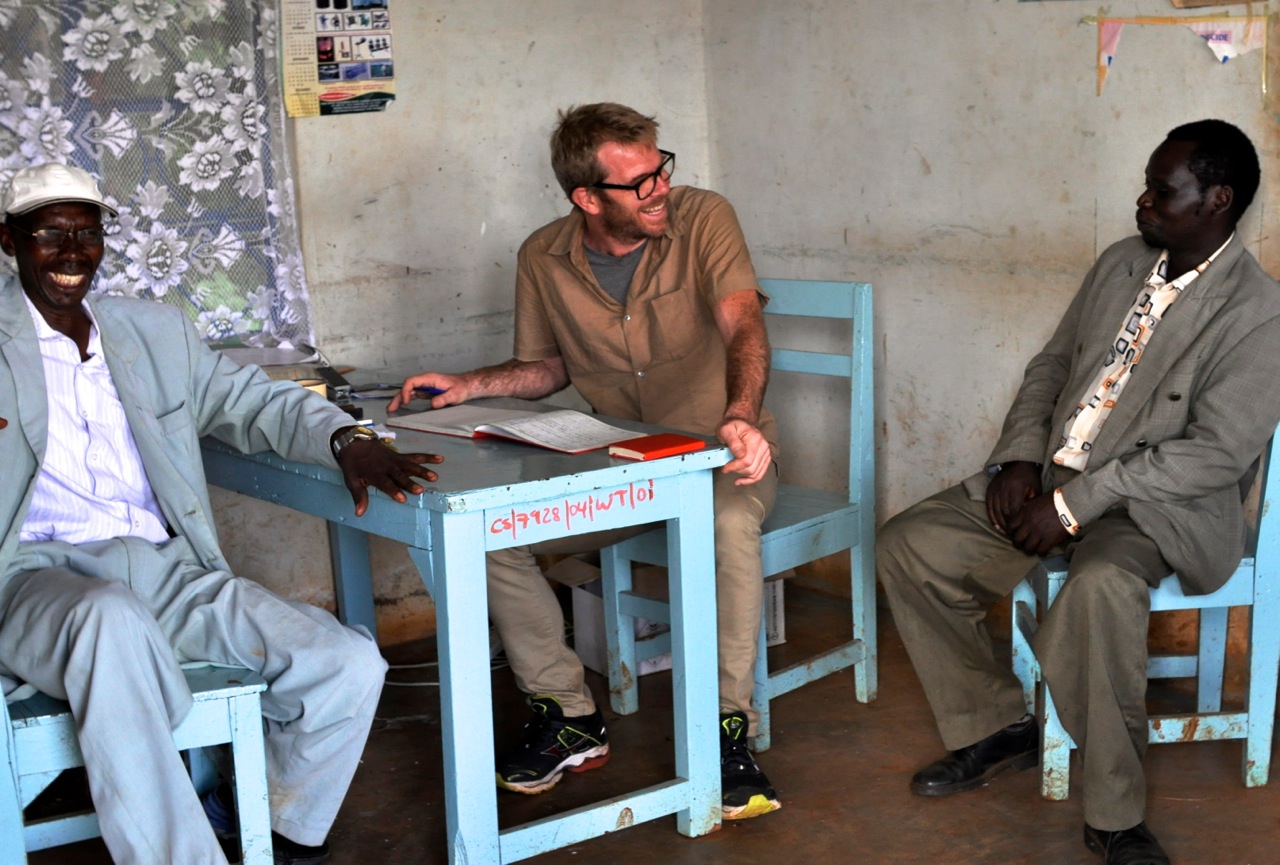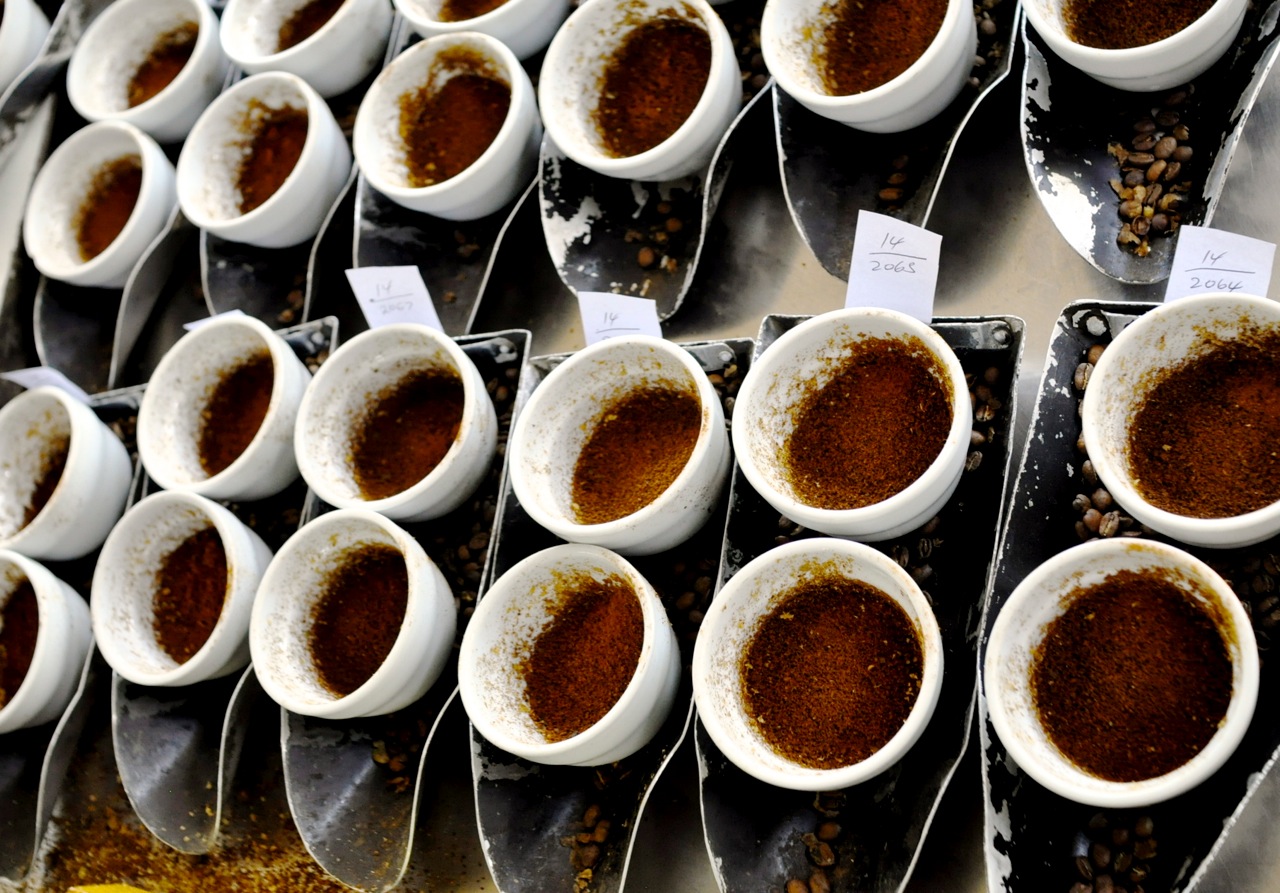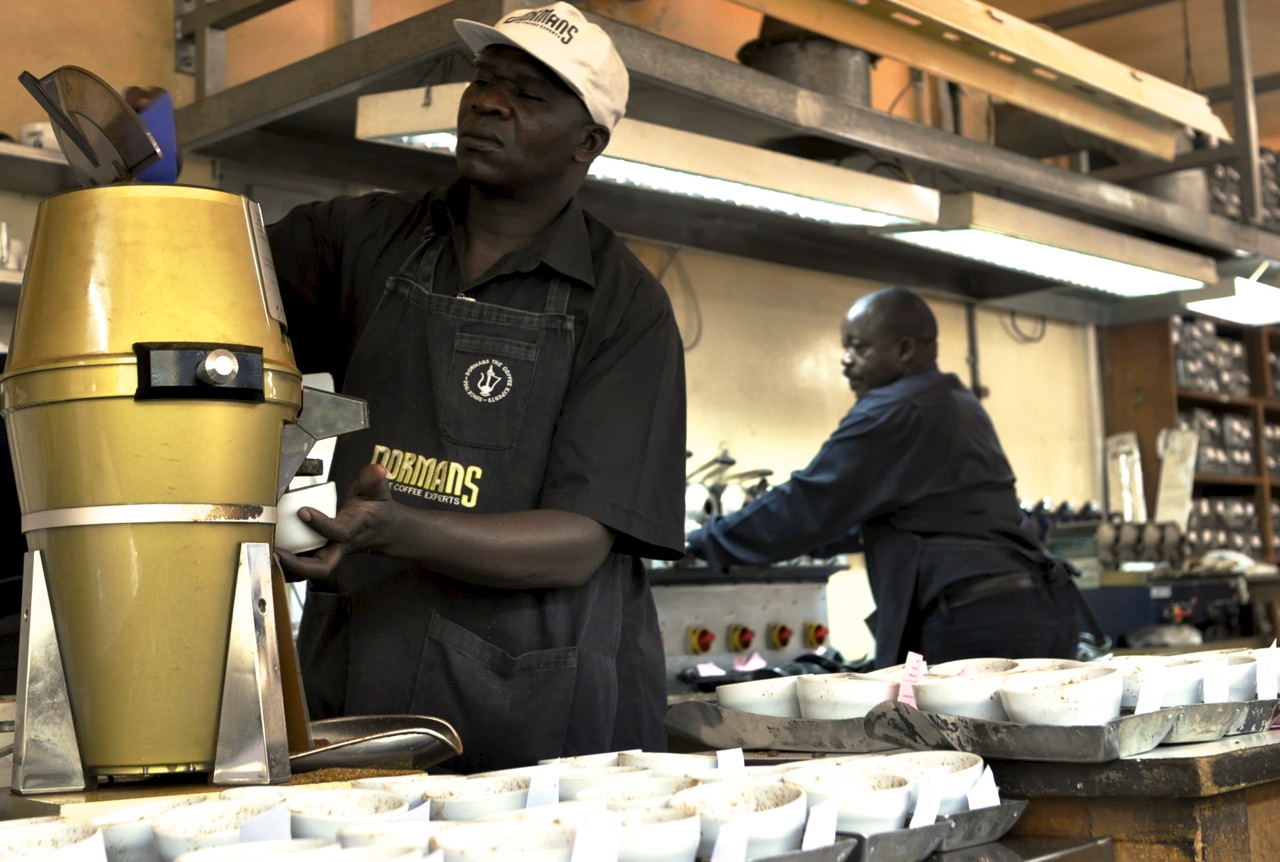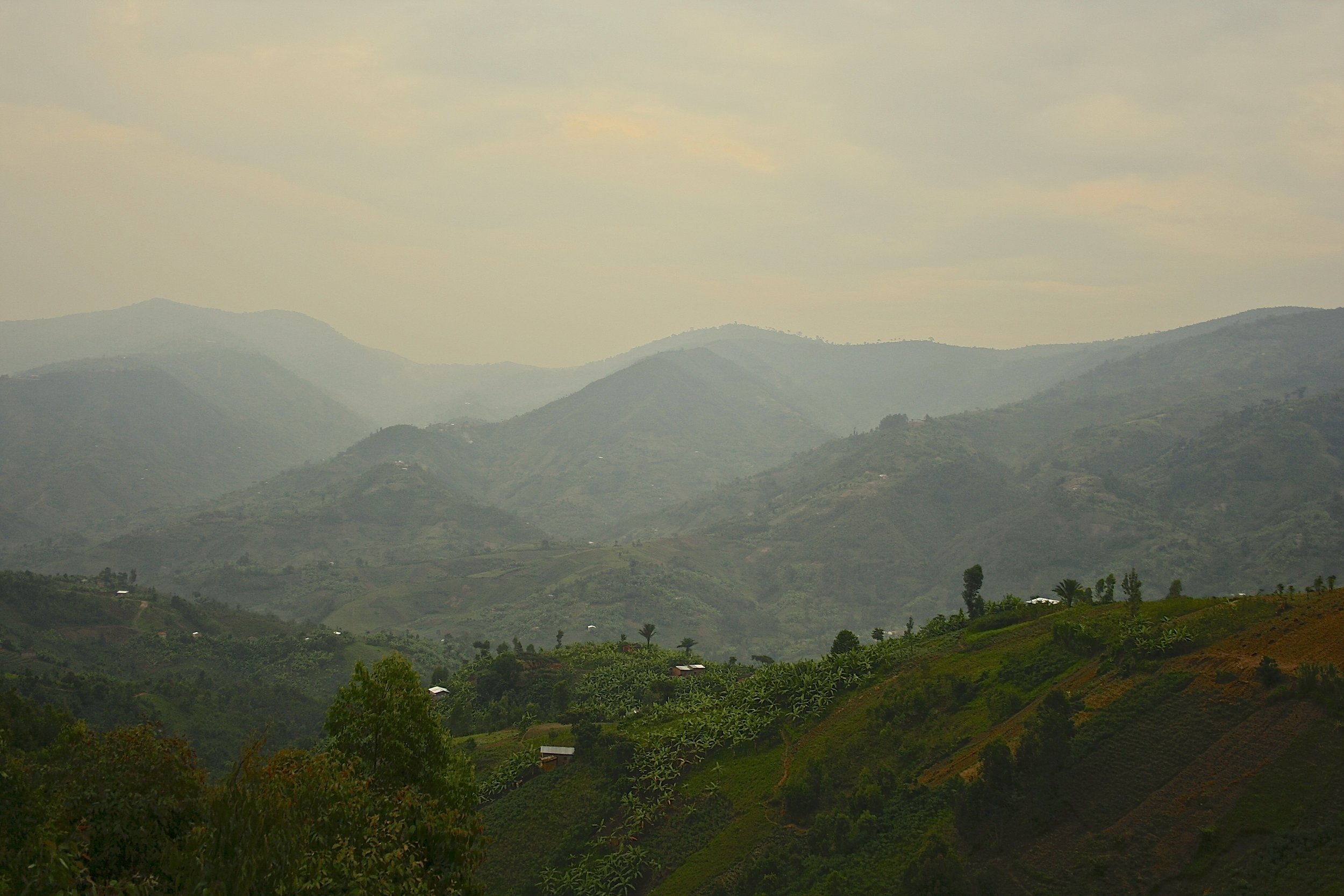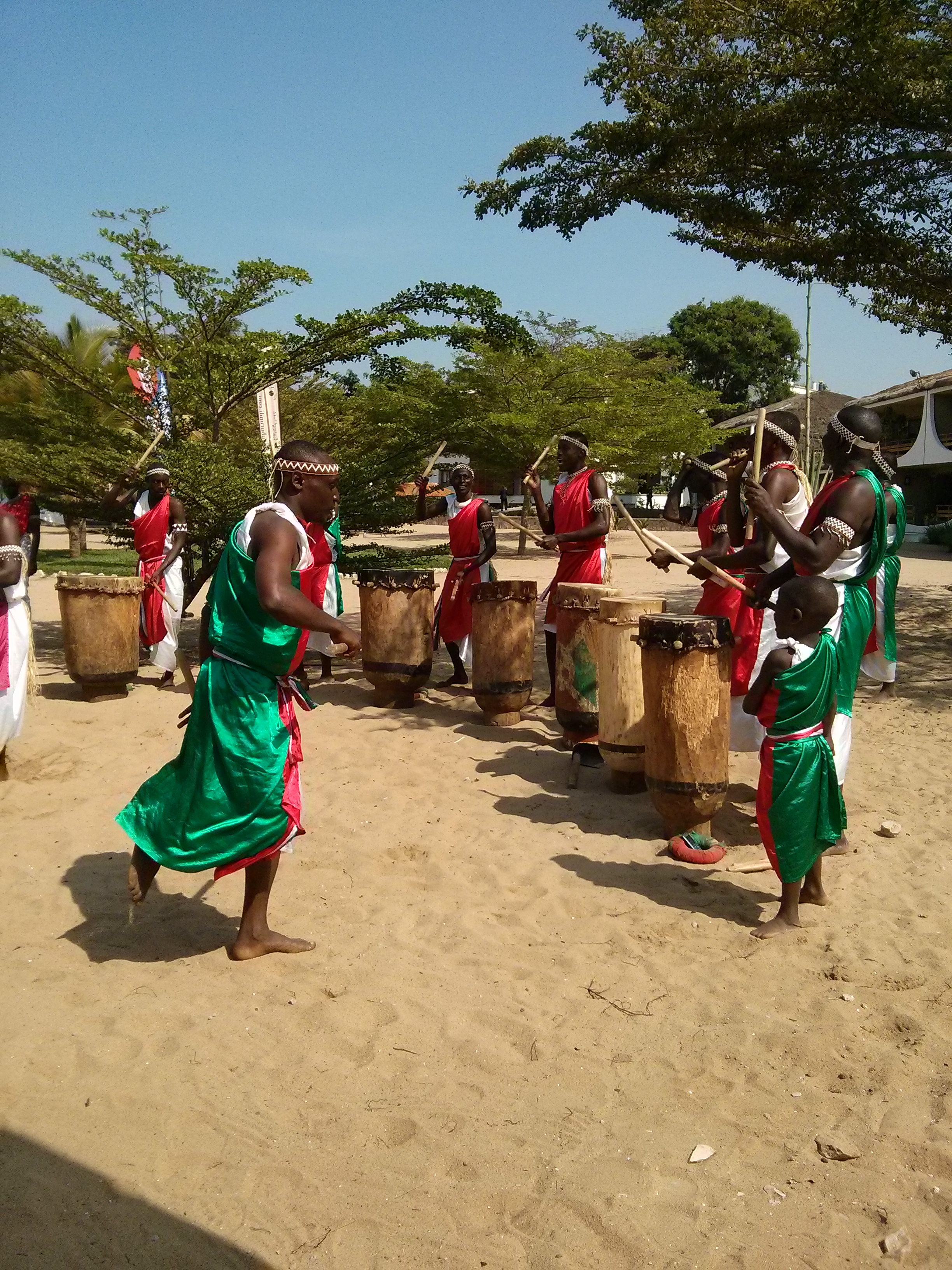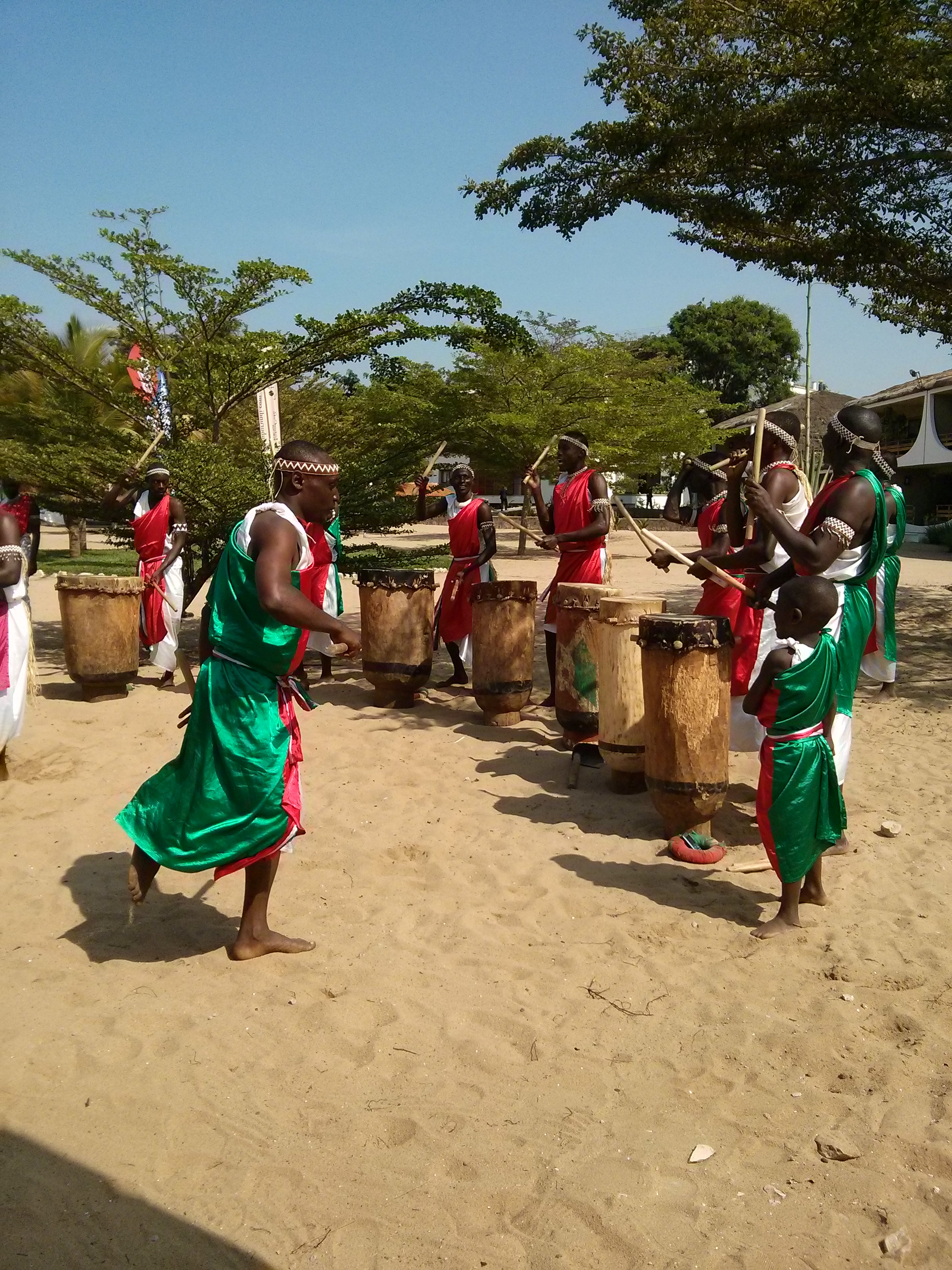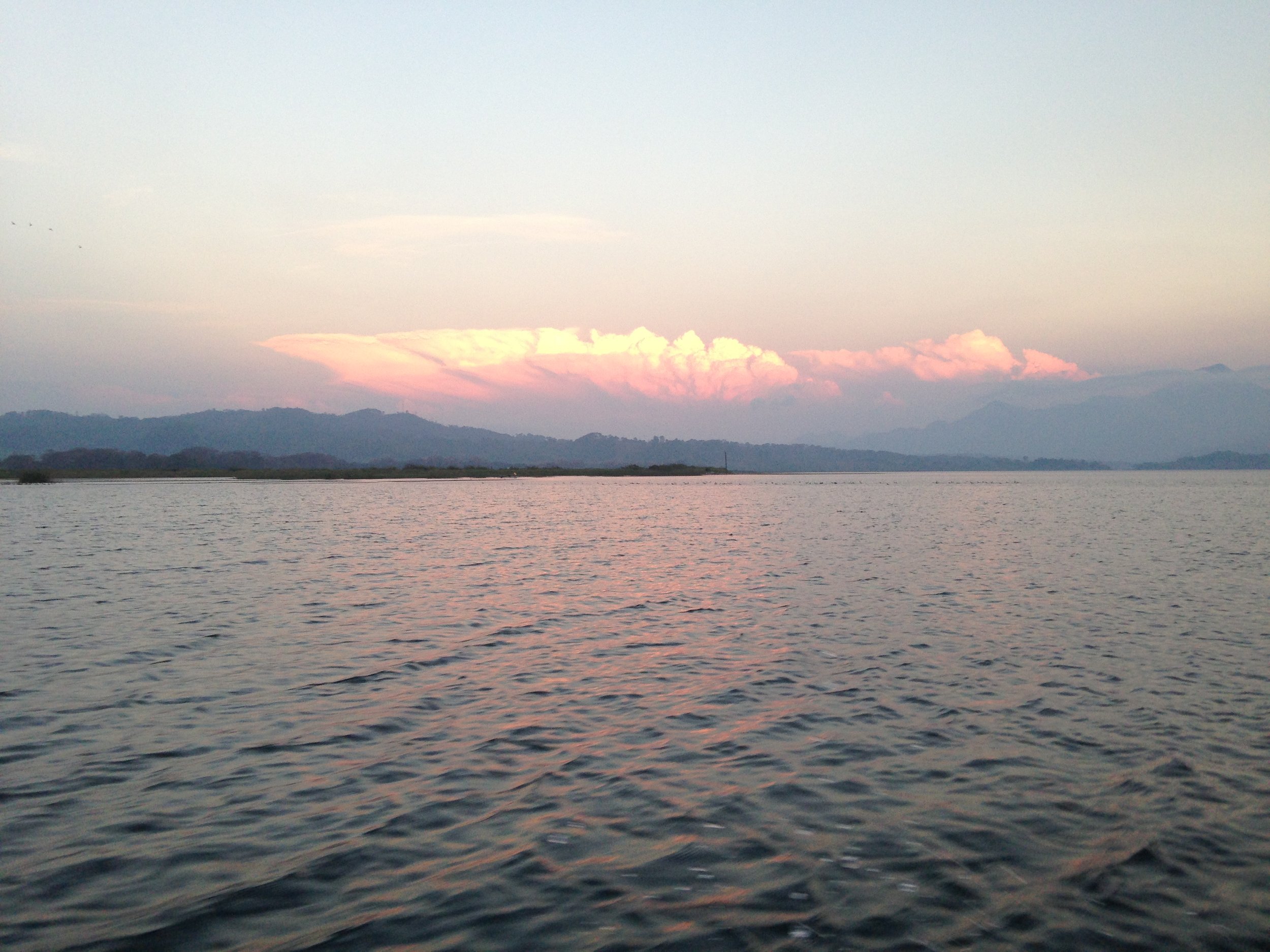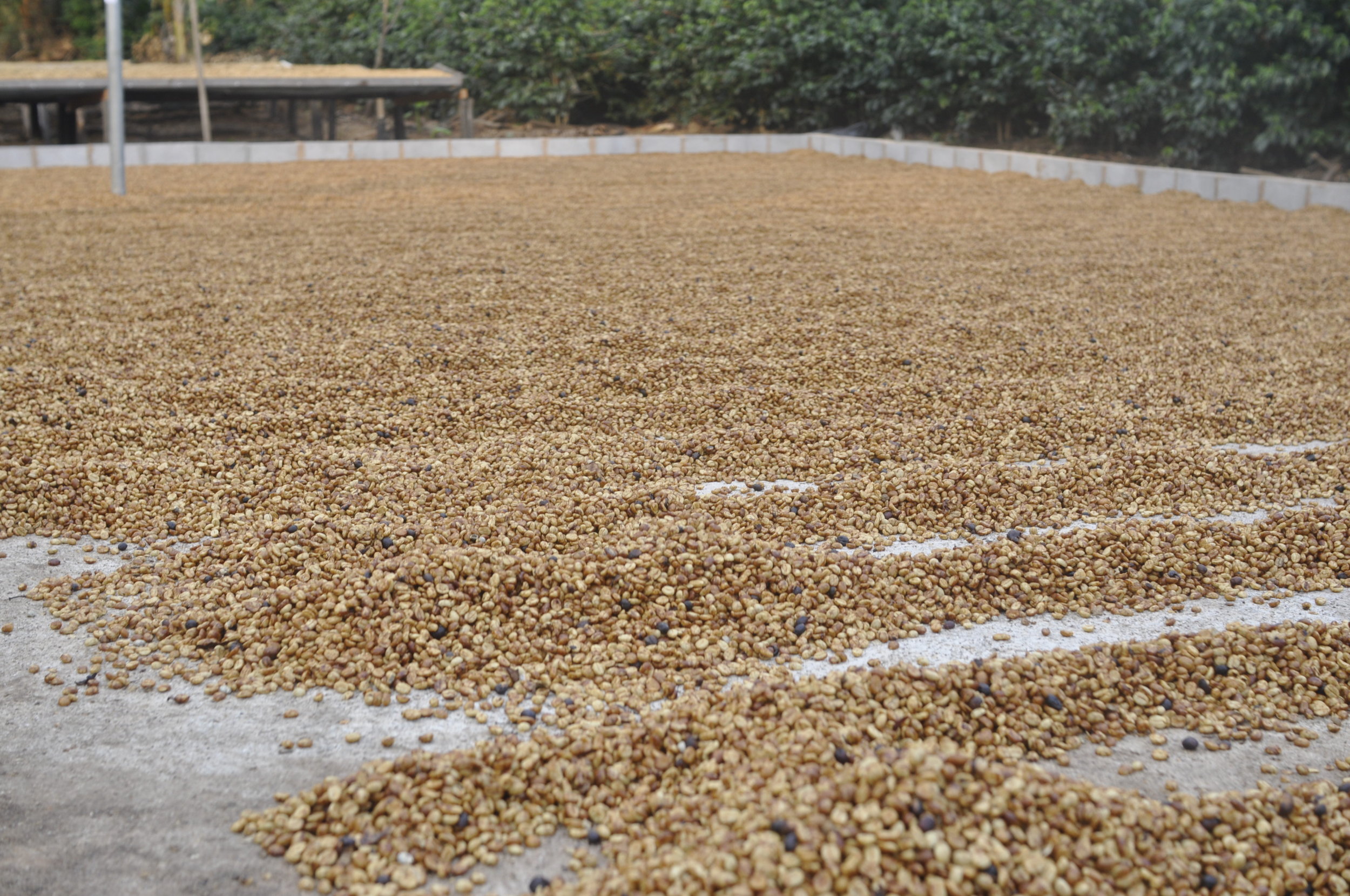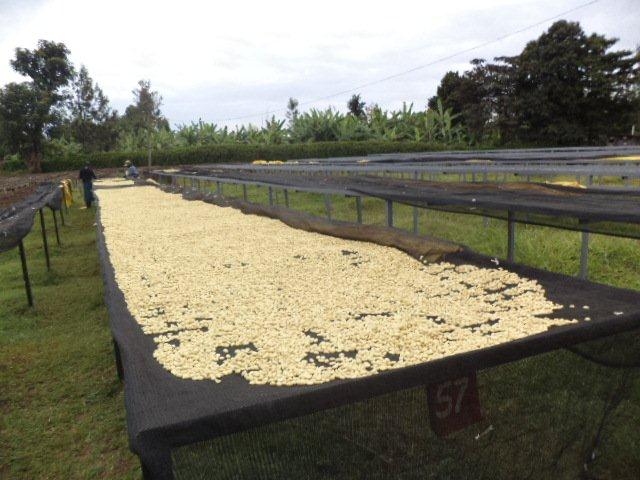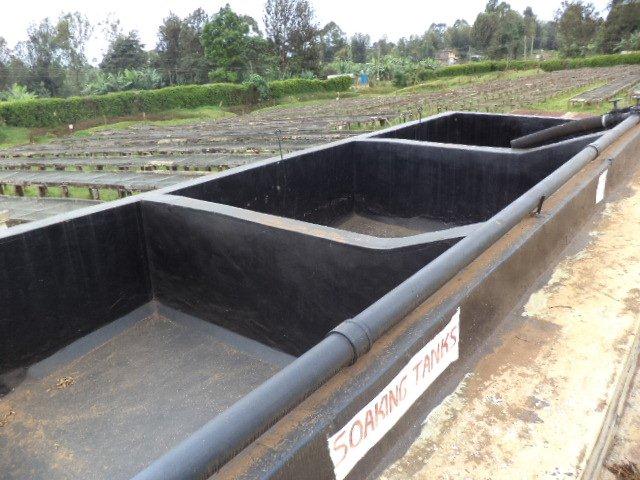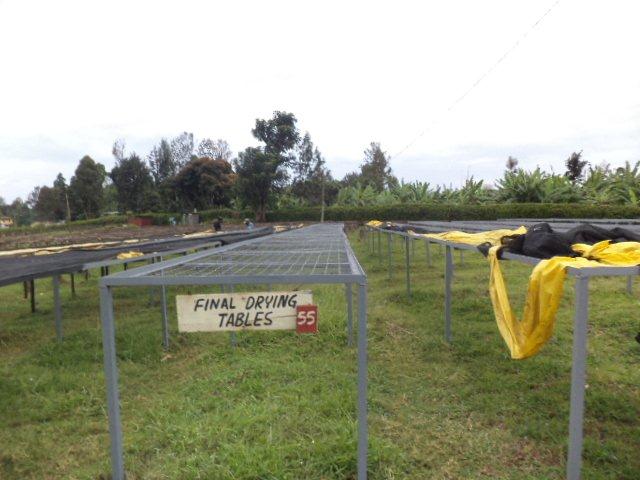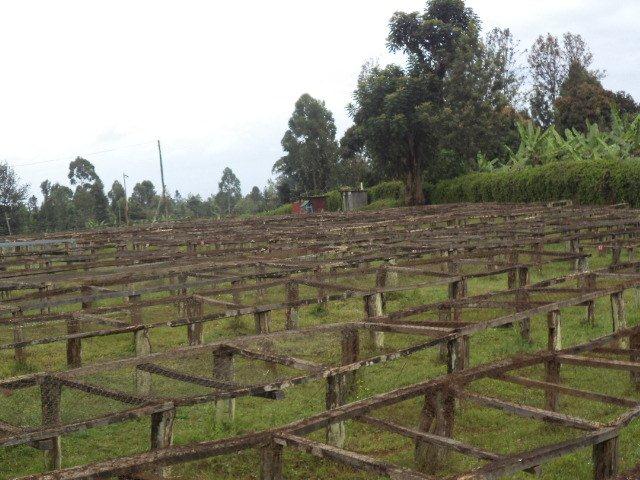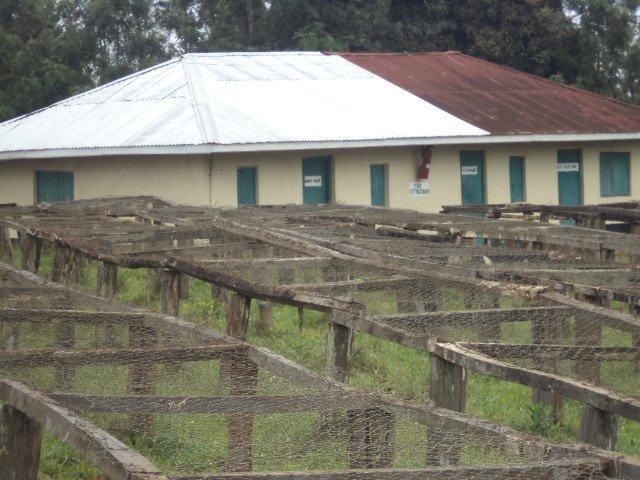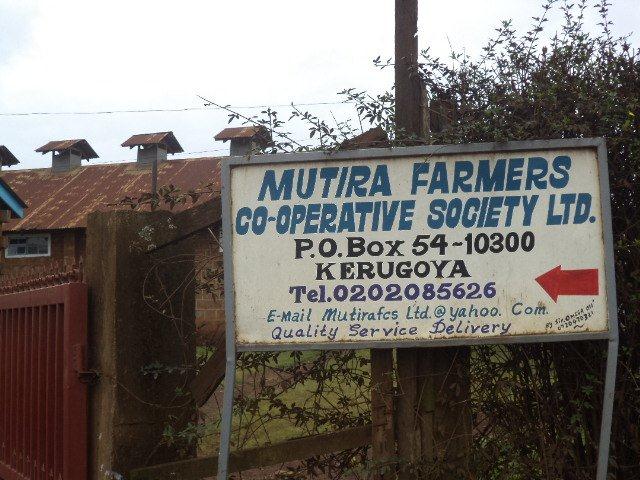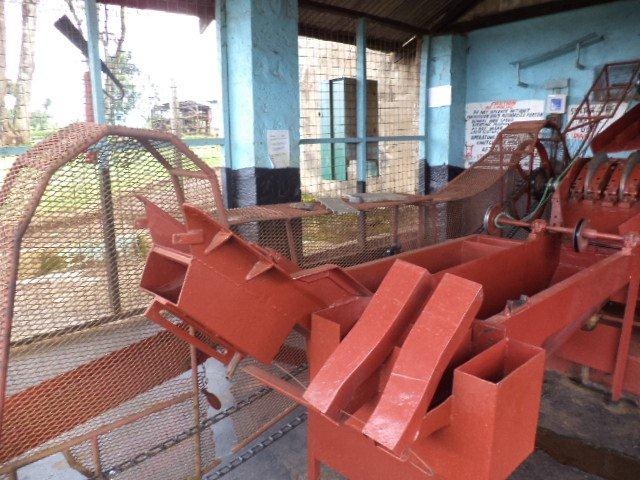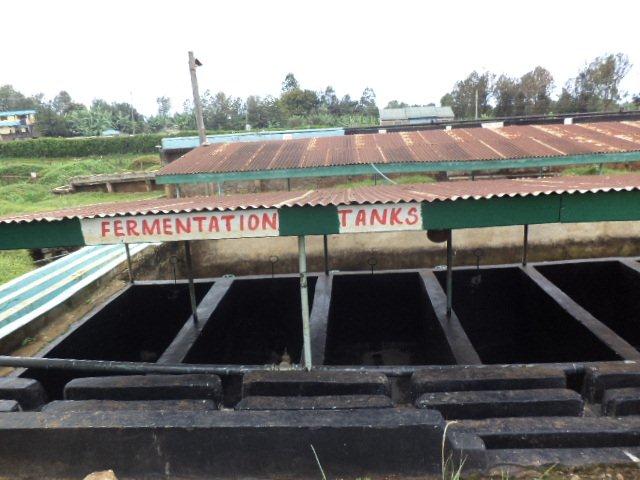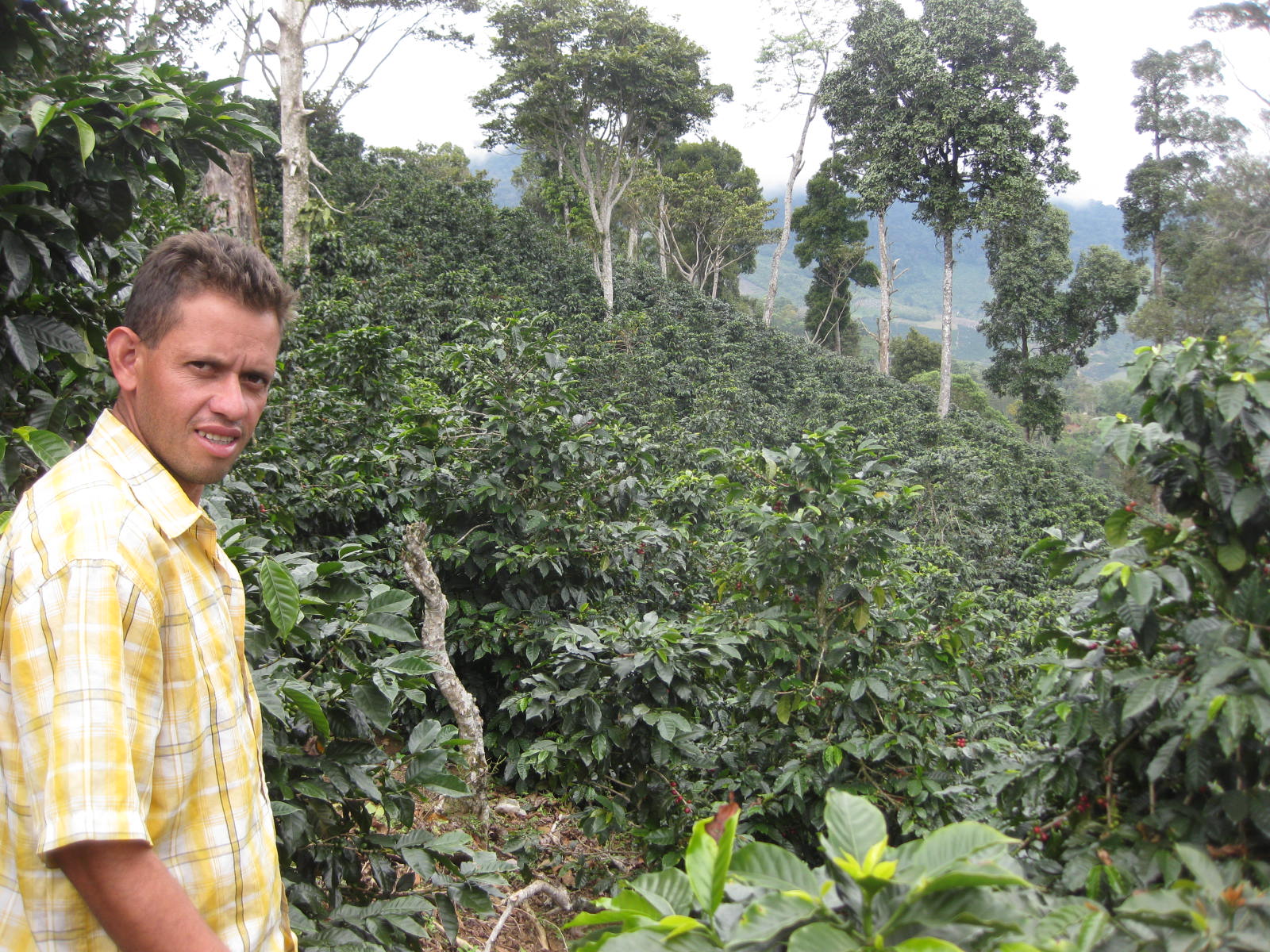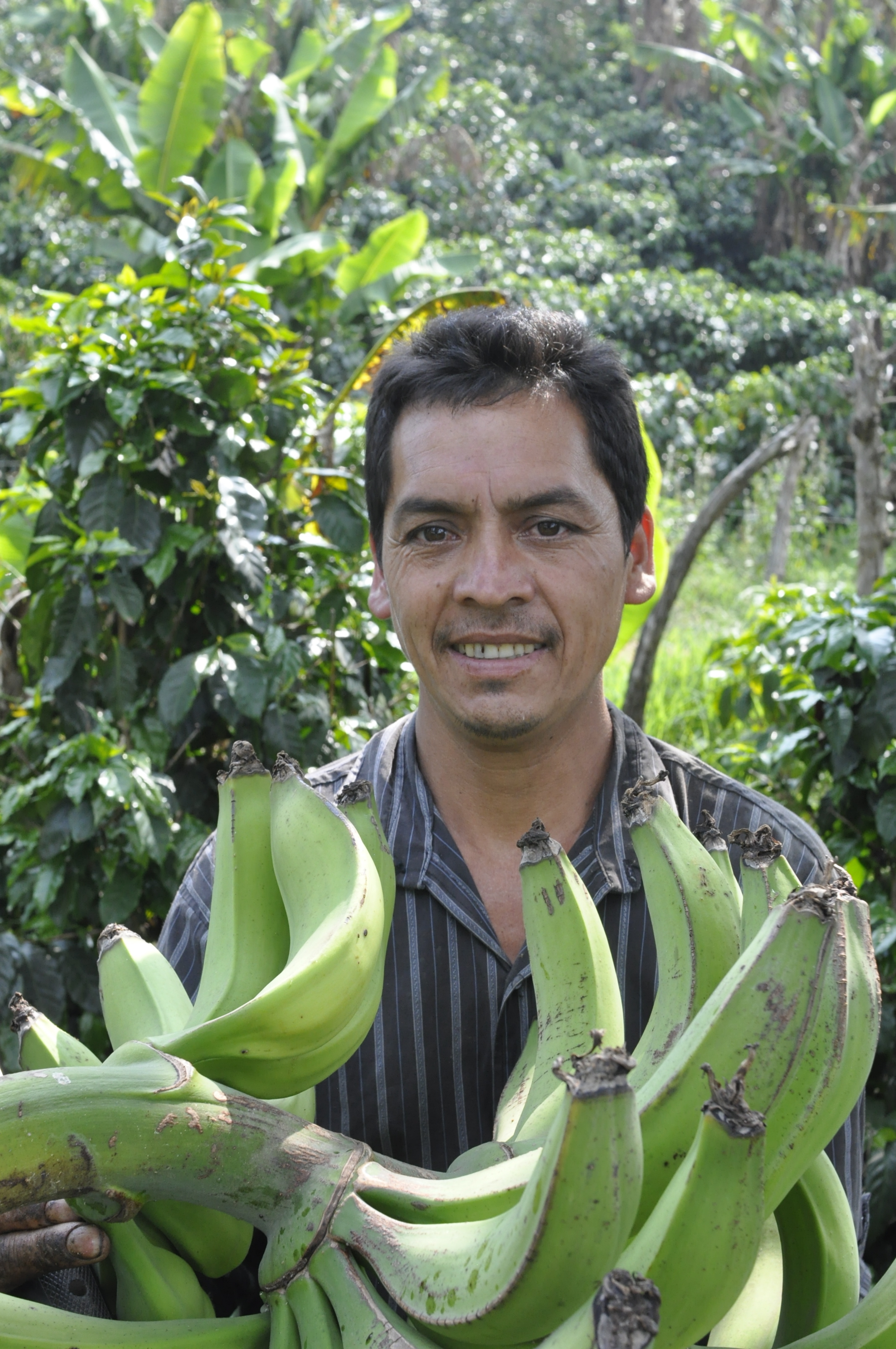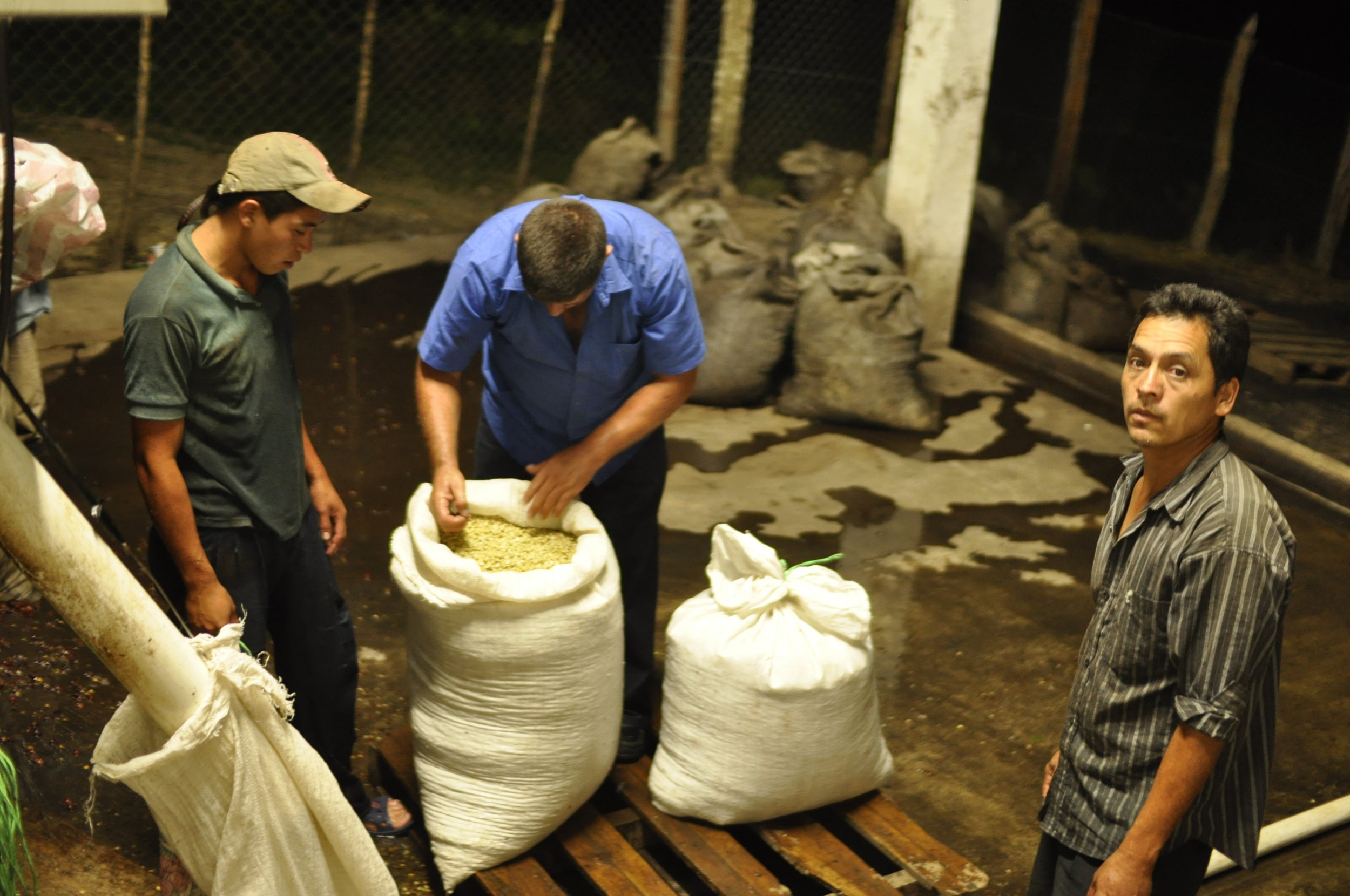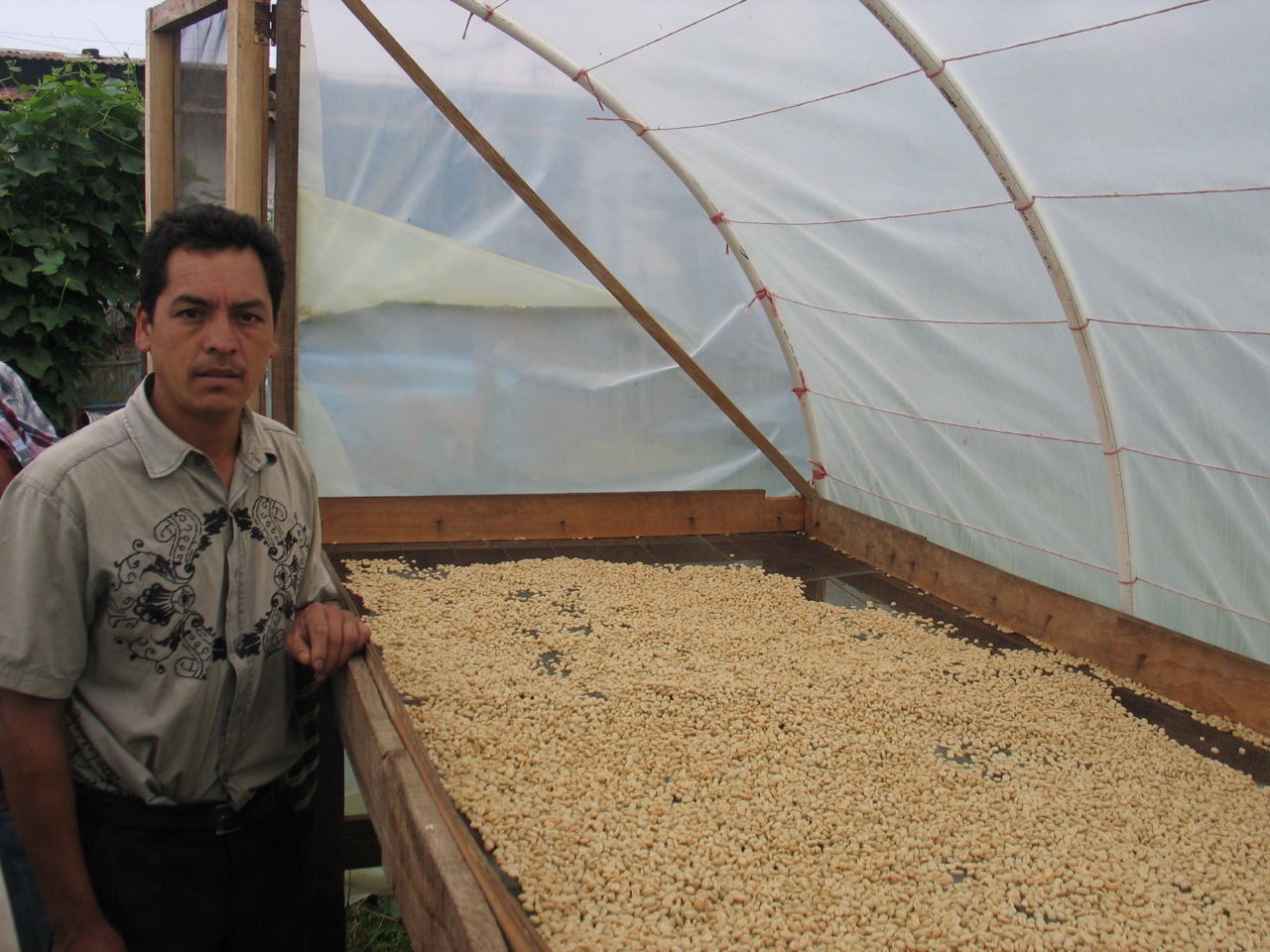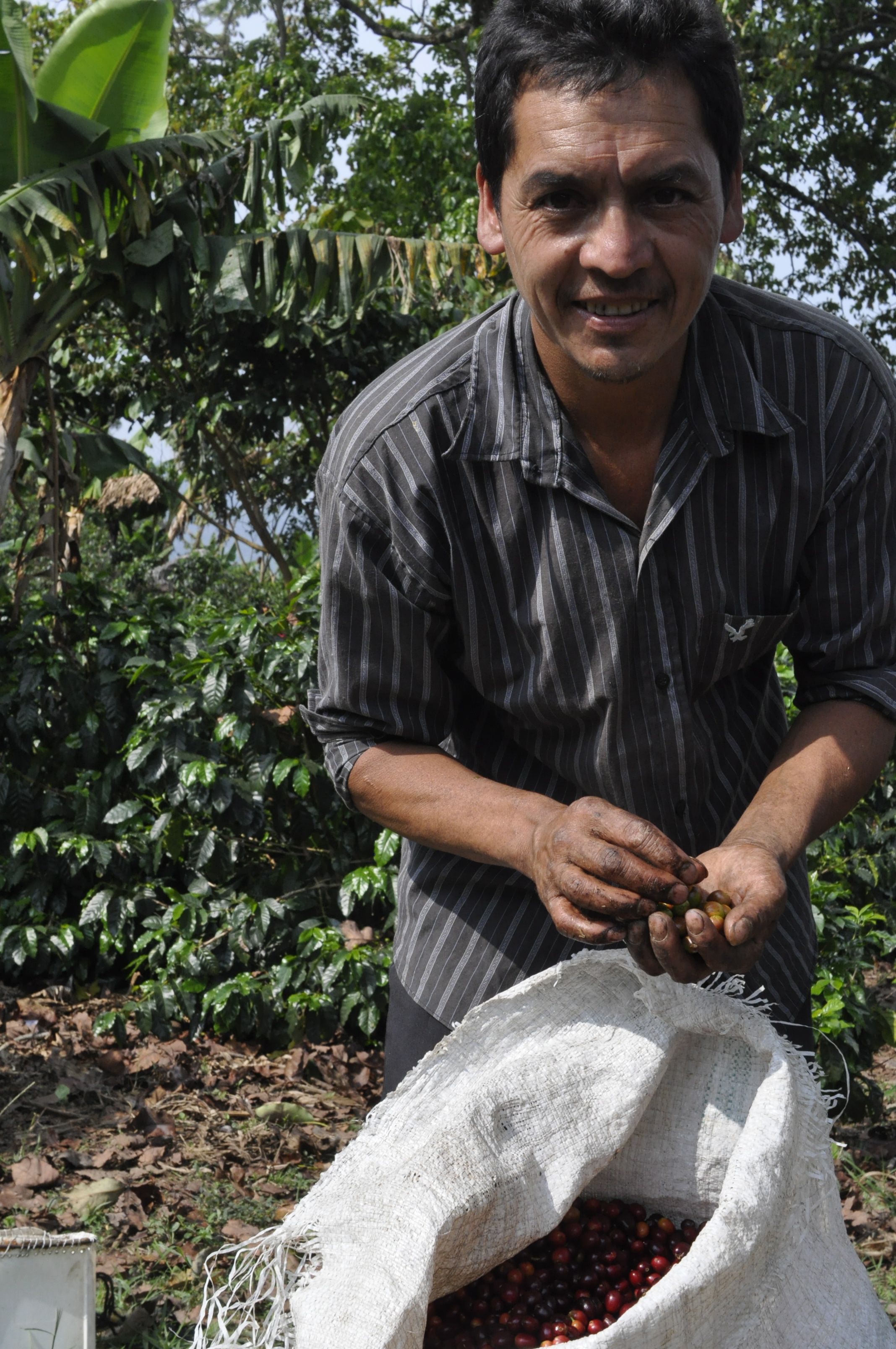 Name: Karinga Factory
Affiliated to: Gitwe Farmers Co-operative Society (FCS)
Province: Central
District: Thika
Location: Gatundu
Nearest Town/Centre: Gatundu
Average Annual Rainfall (mm): 1500
Altitude (masl): 1840
Producers: 650 members
Average Annual Harvest (kg): 208 520
Drying Method: Sun
Harvest Method: Handpicking
Harvest Season: Early: April – June; late: October – December
Varieties: SL 28 & 34
Soil: Rich red volcanic loam soils
Name: Karinga Factory
Affiliated to: Gitwe Farmers Co-operative Society (FCS)
Province: Central
District: Thika
Location: Gatundu
Nearest Town/Centre: Gatundu
Average Annual Rainfall (mm): 1500
Altitude (masl): 1840
Producers: 650 members
Average Annual Harvest (kg): 208 520
Drying Method: Sun
Harvest Method: Handpicking
Harvest Season: Early: April – June; late: October – December
Varieties: SL 28 & 34
Soil: Rich red volcanic loam soils
About
Founded in 1983, Karinga factory lies on five acres of land serving Kimaruri, Kariungu, Gachuha and Mugalwa villages.
Karinga Coffee factory is run by Samwel Muteti, who works with six permanent staff along with a changing number of casual staff. Number of casual staff varies from year-to-year depending on harvest yields. During peak season the factory employs about six casuals, while during the off-peak, at most one is retained. Permanent staff duties include weighing coffee, selection and grading of coffee, paying farmers and addressing farmers’ concerns.
Crop production has not been stable at this factory due to poor payment, internal political wrangles and other factors. Most of farmers are tea growers, but management is now encouraging farmers to go back to coffee production because the cherry prices are stabilizing and have been quite high since 2010.
Affiliate members of the factory carry out all agronomic activities associated with coffee production (i.e. sourcing coffee from the Coffee Research Station and planting according to its guidelines). Their fieldwork also involves weeding, pruning, spraying, and application of fertilizer, mulching and technical advice. Technical advice is offered through farmer training programs and field visits offered by Ministry of Agriculture. Compliance to the agreed guidelines is checked and supervised by the field committee. Amongst other things, this committee checks that coffee is not inter-cropped with maize and beans, though they do allow intercropping with macadamia nuts.
After harvest, coffee cherries are delivered to the factory and undergo wet processing. Water is pumped from the River Rwabura to the reservoir tanks for pulping and recirculation. After pulping, the coffee is stored overnight, is then washed, soaked and finally spread on drying tables. The parchment is frequently turned, and then sorted and stored, awaiting delivery to millers.
To ensure that the processing is carried out efficiently the factory has invested in a pulper, a recirculation system and about 12 conditioning bins.
Background to Kenya
There’s no doubt: Kenya is an amazing coffee destination. Coffees from this origin are known for their powerful aromas, refreshing acidity, flavors of sweet berries, rich mouthfeel, and clean and lingering aftertastes. Years of experience have really taught us how to limit our search at this origin, but we are always open to surprises and are ready for new partners and flavors. Kenya has a well-established and well functioning auction system.
Dormans, based in Nairobi, is where we usually go in order to sample coffees we are interested in buying. Dormans has a reputation for retaining good cuppers. We like them, we trust them, and they rigorously search for the best coffees to offer us. In the peak of the buying/auction season they will screen thousands of coffees each week. Dormans has a license to buy at the auction and they are also partner to a marketing agent/mill—Central Kenya Coffee Mill (CKCM)—where coffee is processed after it finishes drying at the factories.
The washing stations that produce our coffee pride themselves on having some of the best-paid cherry producer members in the country. The system at the Kenyan Coffee Auction is refreshingly transparent in its communicating where coffees come from, its systematic organization of coffee by screen quality (such as size and physical attributes), and in its practice of rewarding cup quality/sensorial attributes.
Most coffee producers in Kenya are “smallholders”. Each producer’s total volume might only be a few bags, thus hundreds of farmers, when living in the same area, are likely to be members of a cooperative, which markets and sells coffee on the whole community’s behalf. Each cooperative typically runs several “factories” (i.e. processing and washing stations) where producers deliver cherries from their farms. Sometimes a producer chooses to deliver to the closest factory but some prefer delivering to a different factory, due to differing management practices. The usual reason for choosing one factory over another is based on the prices a given factory manages to obtain for its cherries.
Good management at a good factory will not allow for unripe or unevenly matured cherries. This is because accepting such cherries damage the potential to receive optimum prices for everyone concerned. We pride ourselves in knowing the factories we buy from pride themselves on ensuring their community of members deliver only red and mature cherries. In Kenya’s market make-up, cherry price is directly linked to cup quality.
In Kenya, a cooperative is a democratically run organization with producers acting as both members and as representatives of the governing board. One key function of the board is to nominate a marketing agent: a body/organization/company that retains a license to sell the coop’s/client’s coffee at the highest possible price. This works in both parties’ interests. Normally a coffee lot is sold at auction, but it can also be sold outside auction if the coop and marketing agent believe they can get an even better price outside auction through selling directly to a customer. That is where we come into the picture.
In the last few years we have taken advantage of the possibility of buying coffees directly from, or at least in understanding and agreement with, the cooperatives. The cooperative is the seller of the coffee and always wants the highest price possible in recognition of: 1. The hard work of quality oriented farmers and factories, 2. Cup quality, and 3. In recognition of the current price of coffees of “similar quality” being sold at auction in Nairobi. Negotiating the price of the best coffees is important to a buyer eager to secure lots before it goes to auction where somebody else might buy it. The price offered has to be high enough for the cooperative to ensure it won’t be sold better at auction, which can, in turn, discourage quality-minded producers. As a matter of fact, all the best coffees are sold this way, thus the only way to get hold of these lots is to be present at origin while they are coming from the mill.
In Kenya, a “coffee lot” is made from a bigger batch of coffee that is delivered to the dry-mill from a cooperative on a given day. When a coffee batch arrives at the mill, it is processed (hulled), analyzed (technically and sensorially), screened (separated due to bean sizes) and given an outturn-number. While the parchment is taken off the beans in the hulling process, the beans are screened and separated due to shape and size.
AAs are flat with screen size 17+. ABs are flat with screen sizes 15 and16. PBs are pea-berries. There are always a certain percentage of lower grades too.
Screen size does not necessarily correlate with quality in terms of flavor attributes. For example, sometimes we find many of the AB-selections to be superior to the AAs from the same lot. In addition, it is not true that PBs are necessarily more intense in flavor or better in quality than flat beans.
Acidity junkies love cupping in Kenya. The questions are much more about “how” and “what kind of acidity” one wants in the coffee, rather than whether one can find it. We work hard to get these Kenya lots in quick and fresh so roasters can have all the acidity you wish to play with. Look for a well prepared, vacuum-packed and clean selection.
